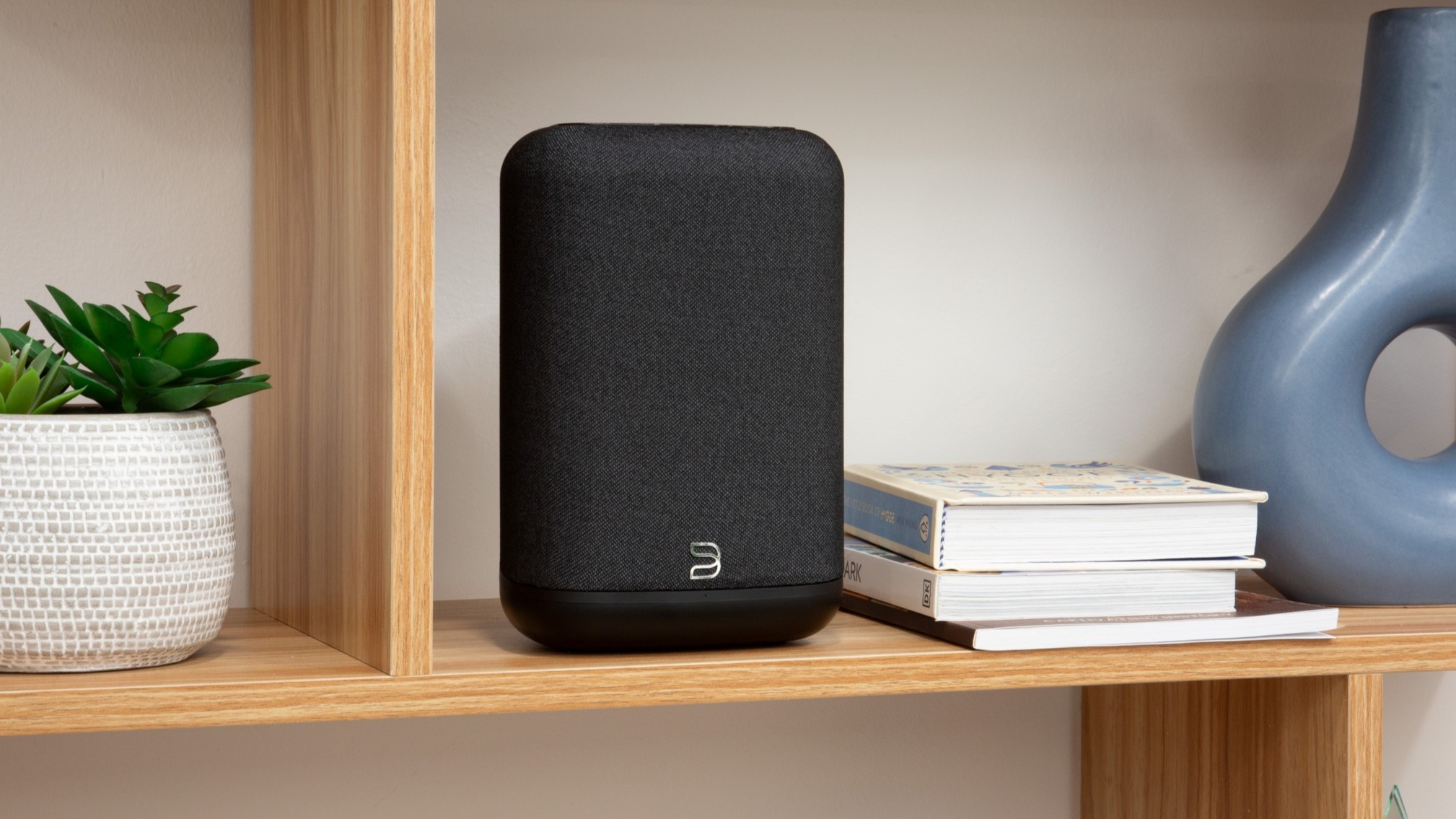Best 65-inch TVs 2025: the top models we've tested
Enjoy 4K TV shows and movies in all their cinematic glory with a brilliant 65-inch TV
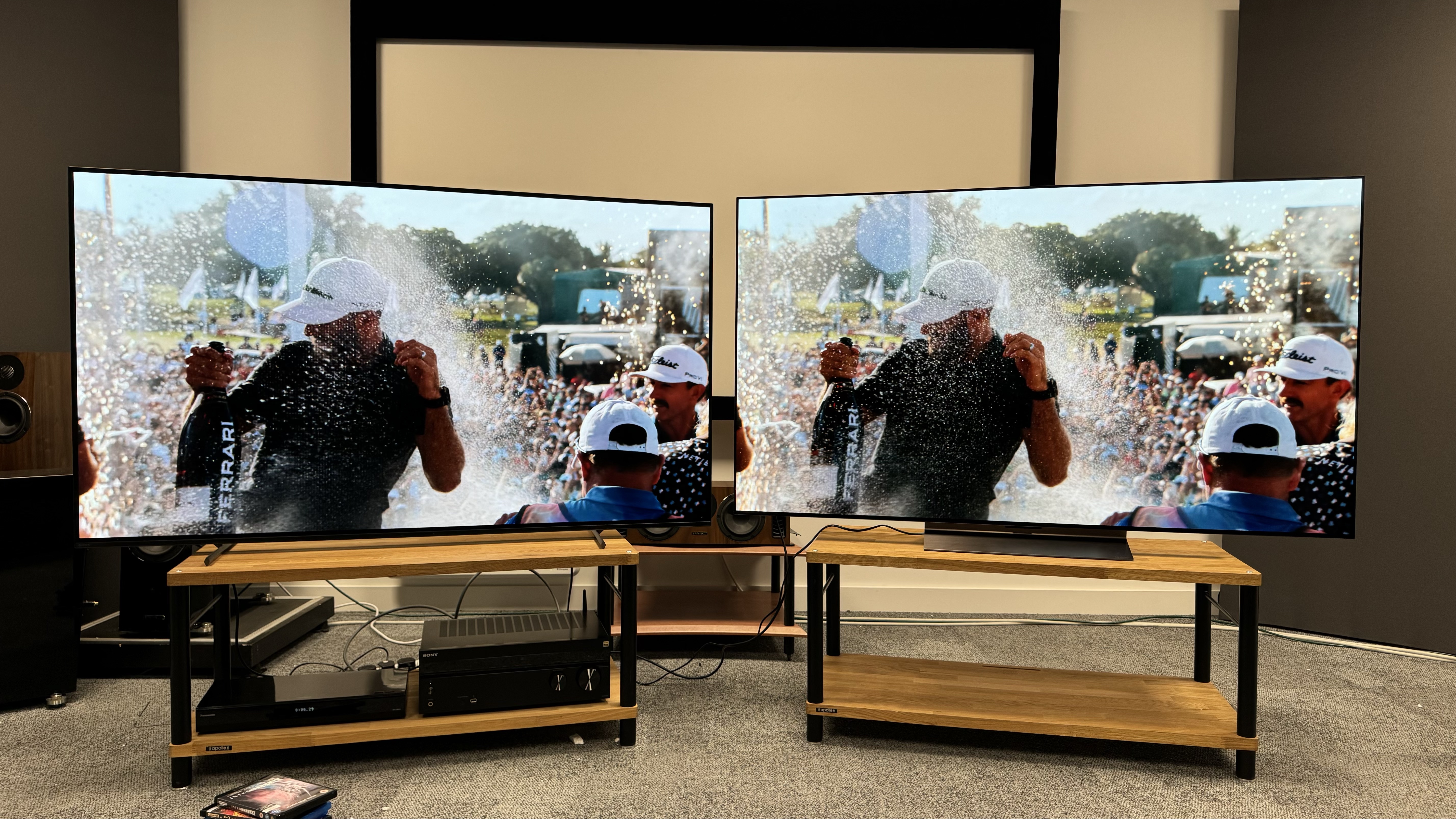
In my opinion, 65 inches is the perfect size for a TV. In a typical living room, a 65-inch TV will be terrifically cinematic, but it shouldn't completely dominate the space, hopefully keeping everyone in the family happy.
I'm clearly far from the only one who loves 65-inch TVs, as this is one of the most popular screen sizes in the world. That popularity means manufacturers produce all of their best TVs in a 65-inch size, so you're really spoiled for choice. All of the best panel technologies, specs and features are available to you when buying a 65-inch TV.
That does present a problem, though: how do you filter all of those options down to the model that's best for you?
Well, that's where we come in. We've been testing 65-inch TVs since the days of plasma (remember those?) and have put every major model through our rigorous, comparative reviews gauntlet, so you can rest assured that we very much know which are the best. And, perhaps more importantly, which should be avoided like the proverbial plague.
Naturally, you'll find none of the latter on this page. Only the very best models make it onto this list, which we've broken down by price and requirements. You can read more about our testing process in the 'how we test' section towards the bottom of this page, or you can simply scroll straight down to the recommendations.
With many of the main manufacturers' 2025 ranges now available to buy, there's the potential for this list to change relatively frequently. In fact, we have one of those very TVs from Sony as a new entry on the list this month.
If you're not limited by size, also check out our guides to the best TVs overall, the best cheap TVs and the best gaming TVs. And for the latest and lowest prices available right now across the internet, check out the best TV deals.
The quick list
You can see a quick breakdown of all the TVs in this list with a short summary of what they are best at and why we think they are worth your money in the table below. If you want more detail use the jump links to quickly get to the TVs specific entry where we fully explain why it made the list.
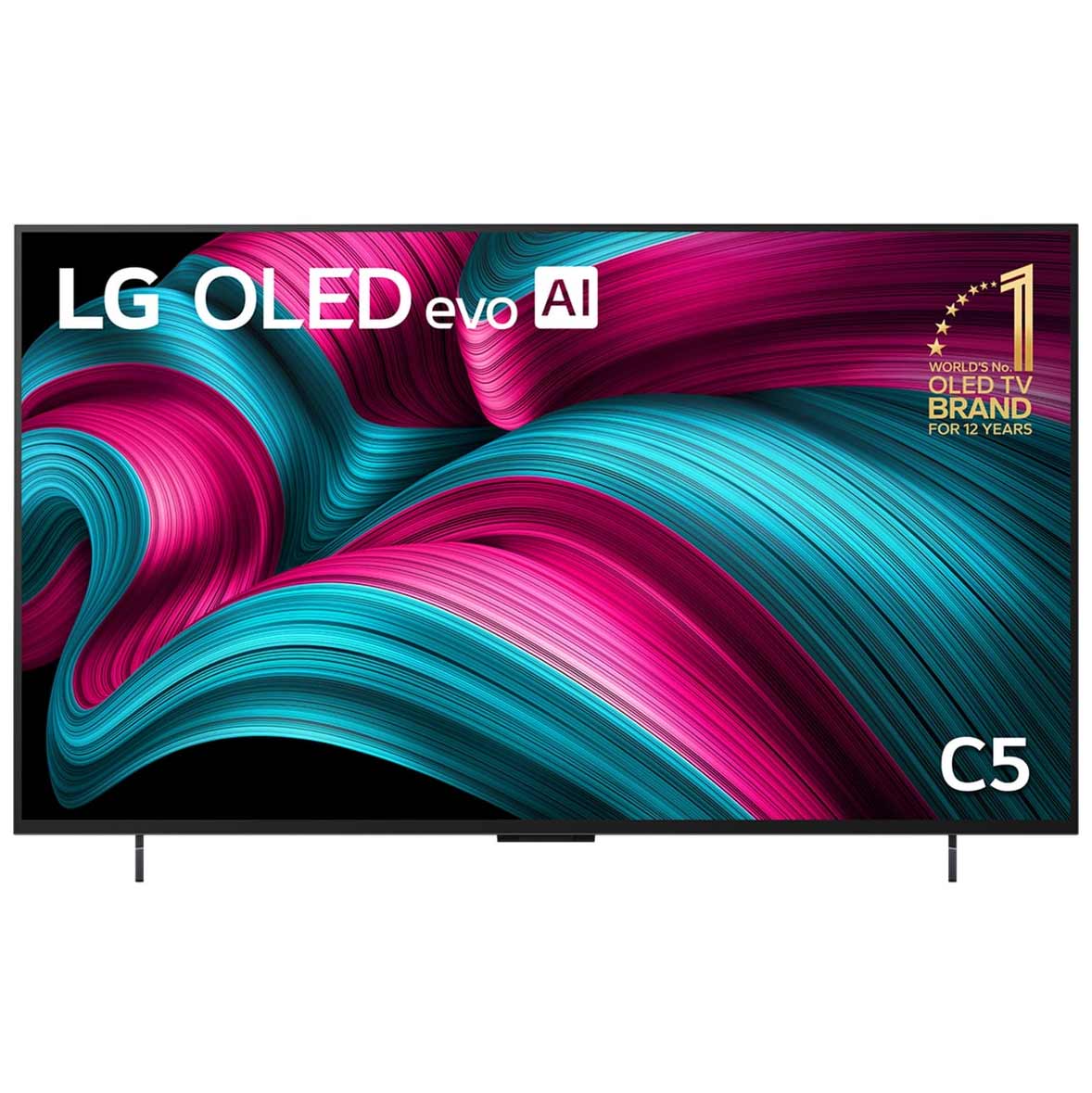
Best overall
A refined evolution of the C-series that delivers rich, cinematic pictures, superb gaming support, and slick smart features.
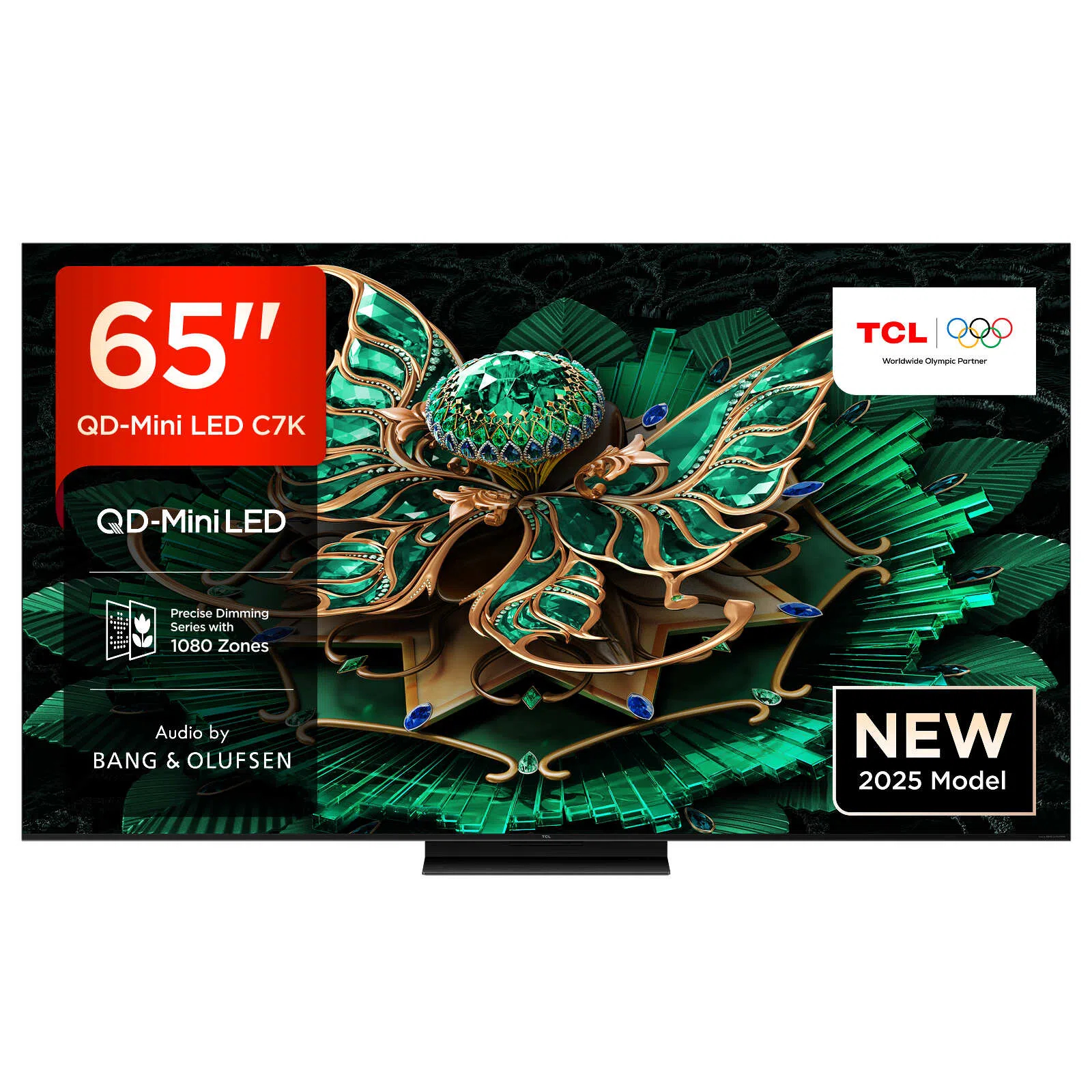
Best mid-range
An outstanding value Mini LED with 1008 dimming zones, strong HDR brightness, vibrant yet controlled colours, and excellent consistency that rivals far pricier sets
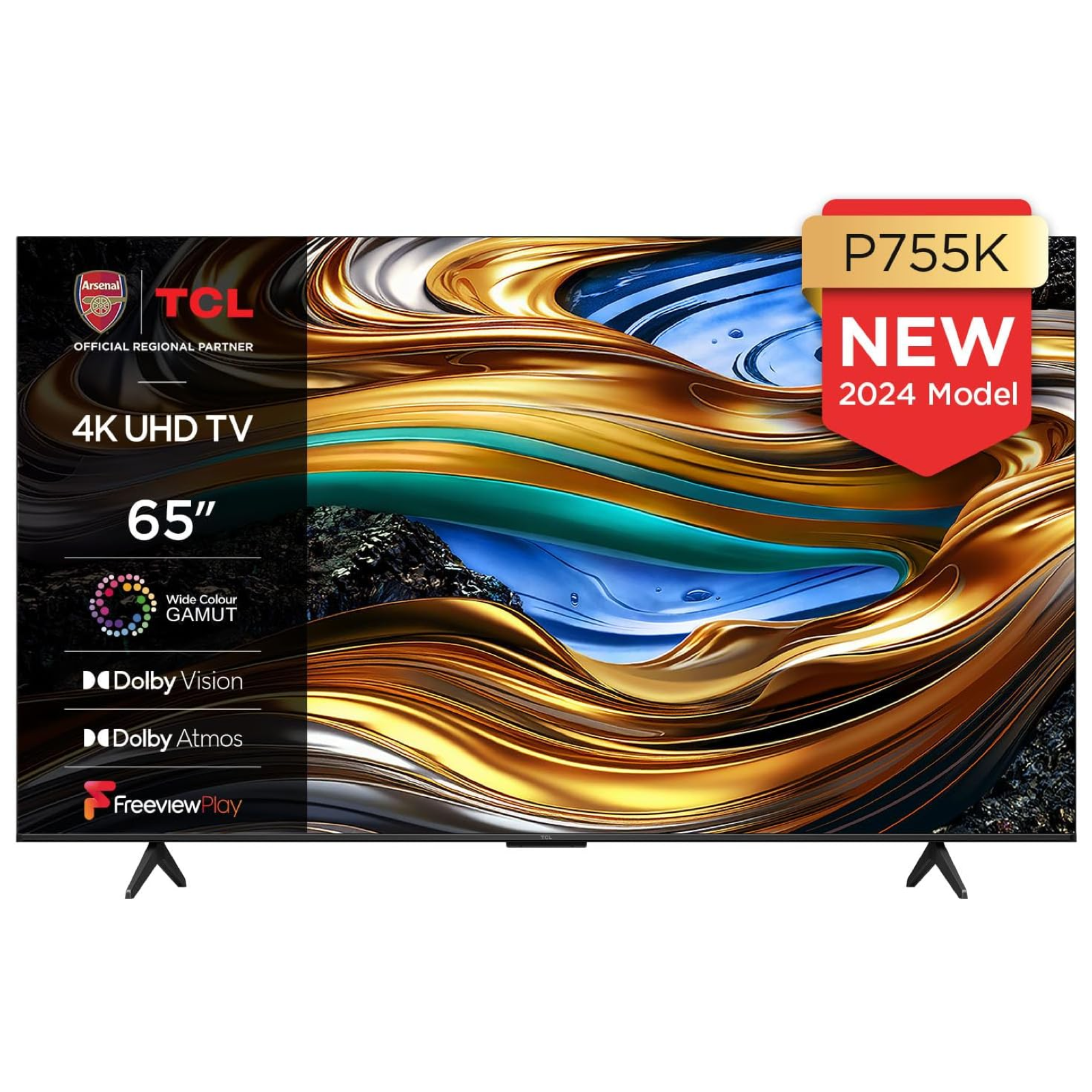
Best budget TV (UK)
The TCL P755K isn't perfect, but it's far better than it has any right to be given its extraordinarily low price. It's surprisingly well-specced, too.
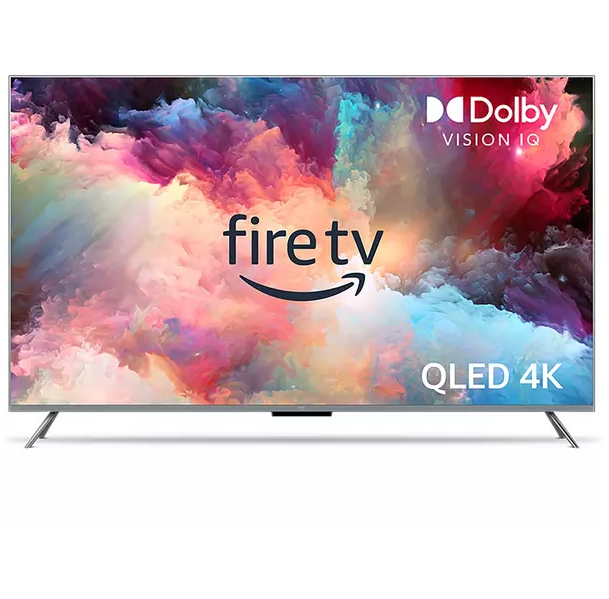
Best budget TV (US)
If you're in the US and on a strict budget then the Amazon Omni QLED is the best affordable 65-inch TV we've tested
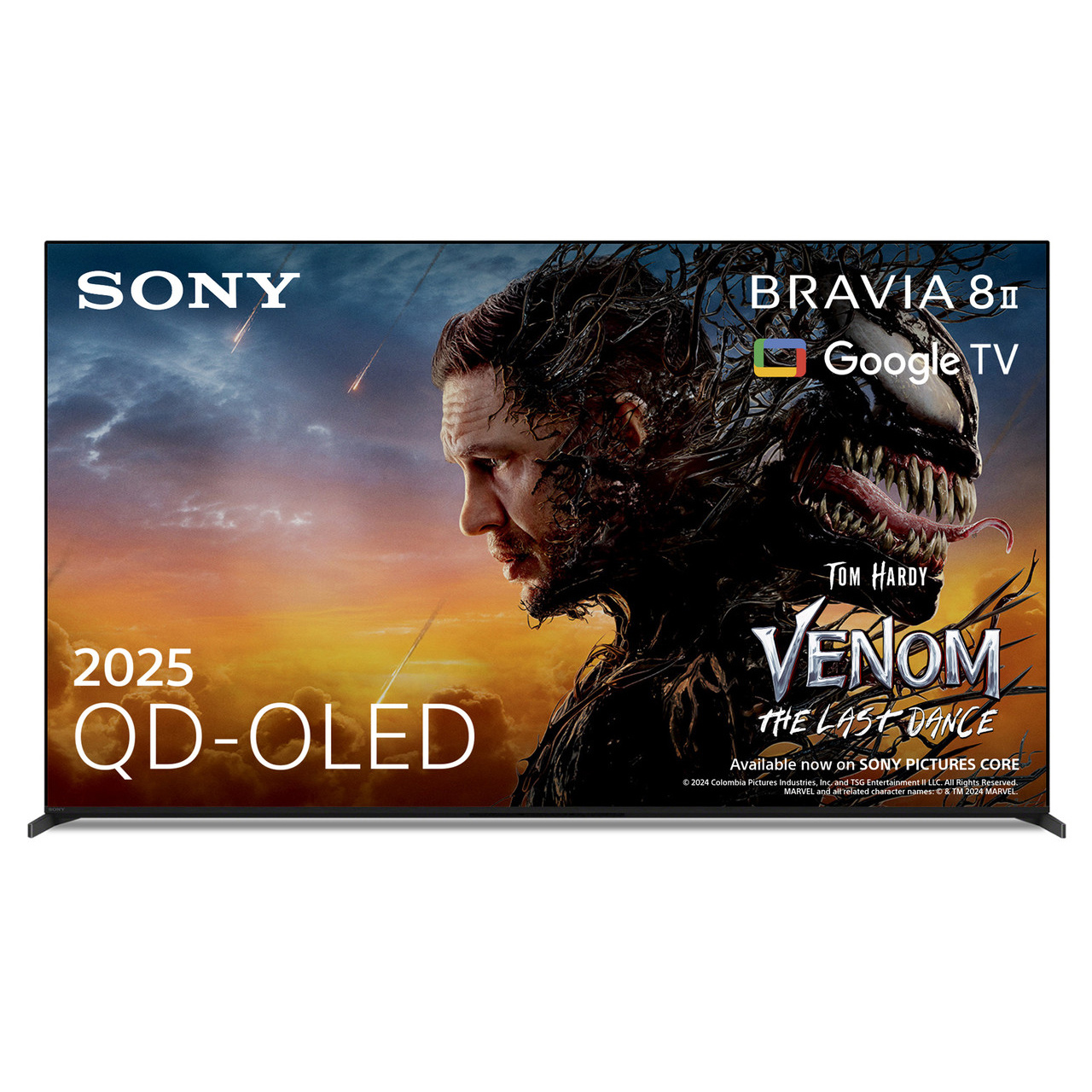
Best premium TV
A QD-OLED that builds on the A95L with higher brightness, better shadow detail, and more three-dimensional solidity, making it one of the best TVs we've ever reviewed.
29th September 2025
Replaced the Sony Bravia 8 with the LG C5 as the overall best 65-inch TV. Added the TCL C7K as the best mid-range option, and replaced the Sony A95L with the Sony Bravia 8 II as the best premium 65-inch TV.

I'm What Hi-Fi?'s TV & AV Editor, and I've been testing TVs (as well as soundbars, AVRs, speaker packages and hi-fi) since way back in 2007. In that time, I'm confident I've reviewed more 65-inch TVs than models in any other size. I also switched to using a 65-inch TV at home about a decade ago and haven't looked back since (though I do change my TV every year or so). For me, it's the perfect size for getting a cinematic experience at home without actually turning the living room into a cinema – and thankfully my wife agrees! You're also spoiled for choice at this size and have the very best features and picture quality available to you.
The best 65-inch TV overall
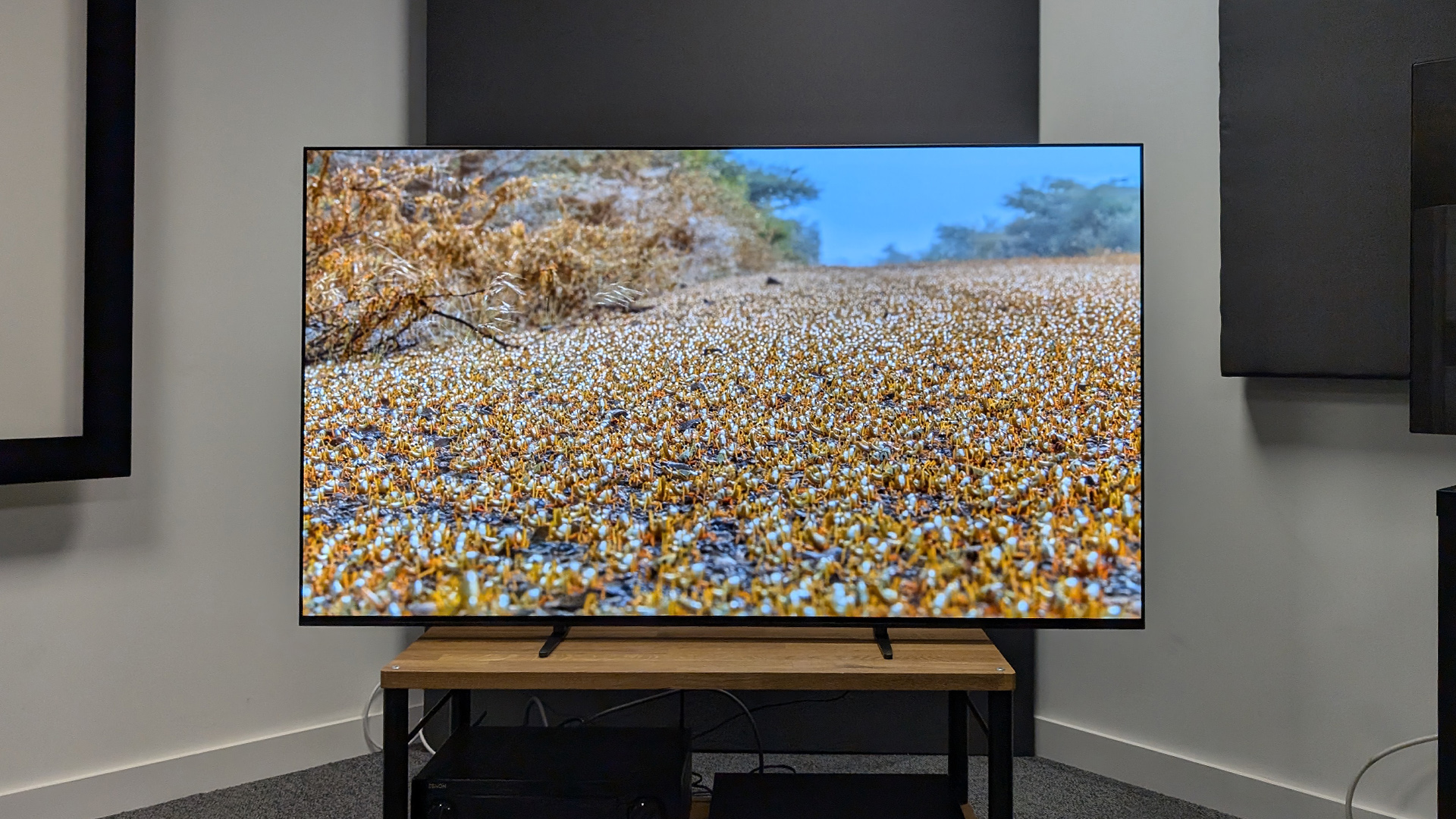
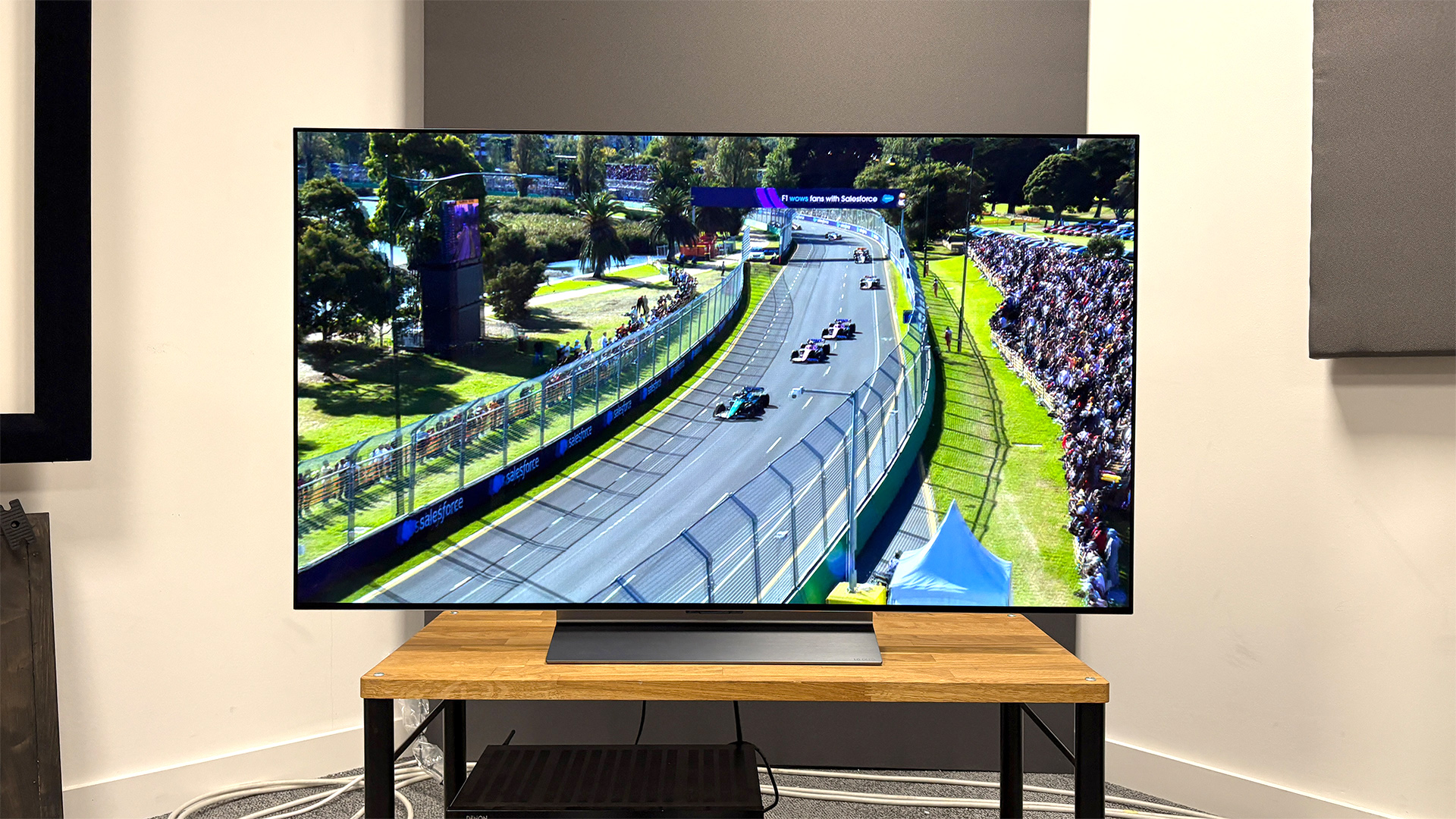
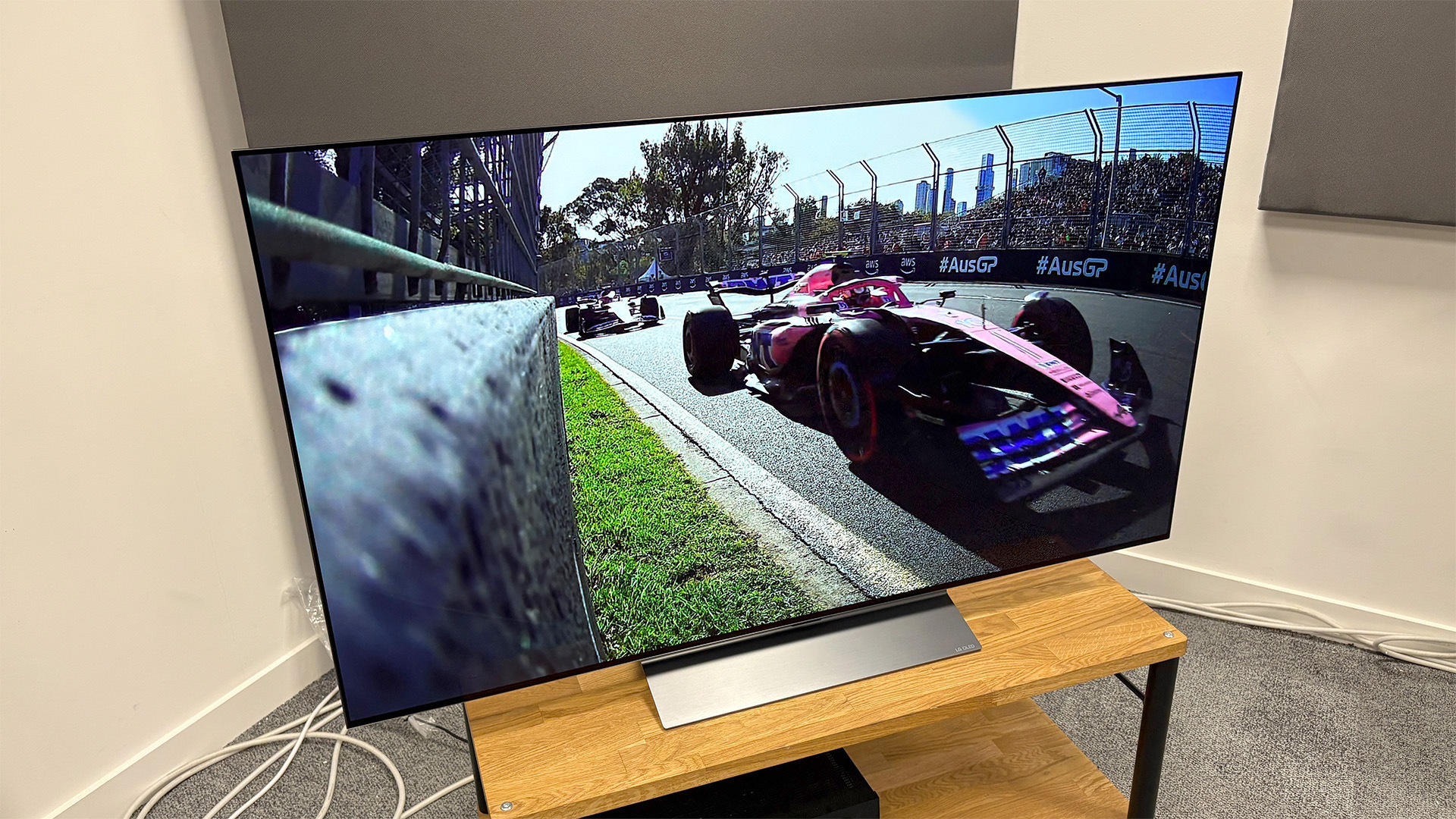

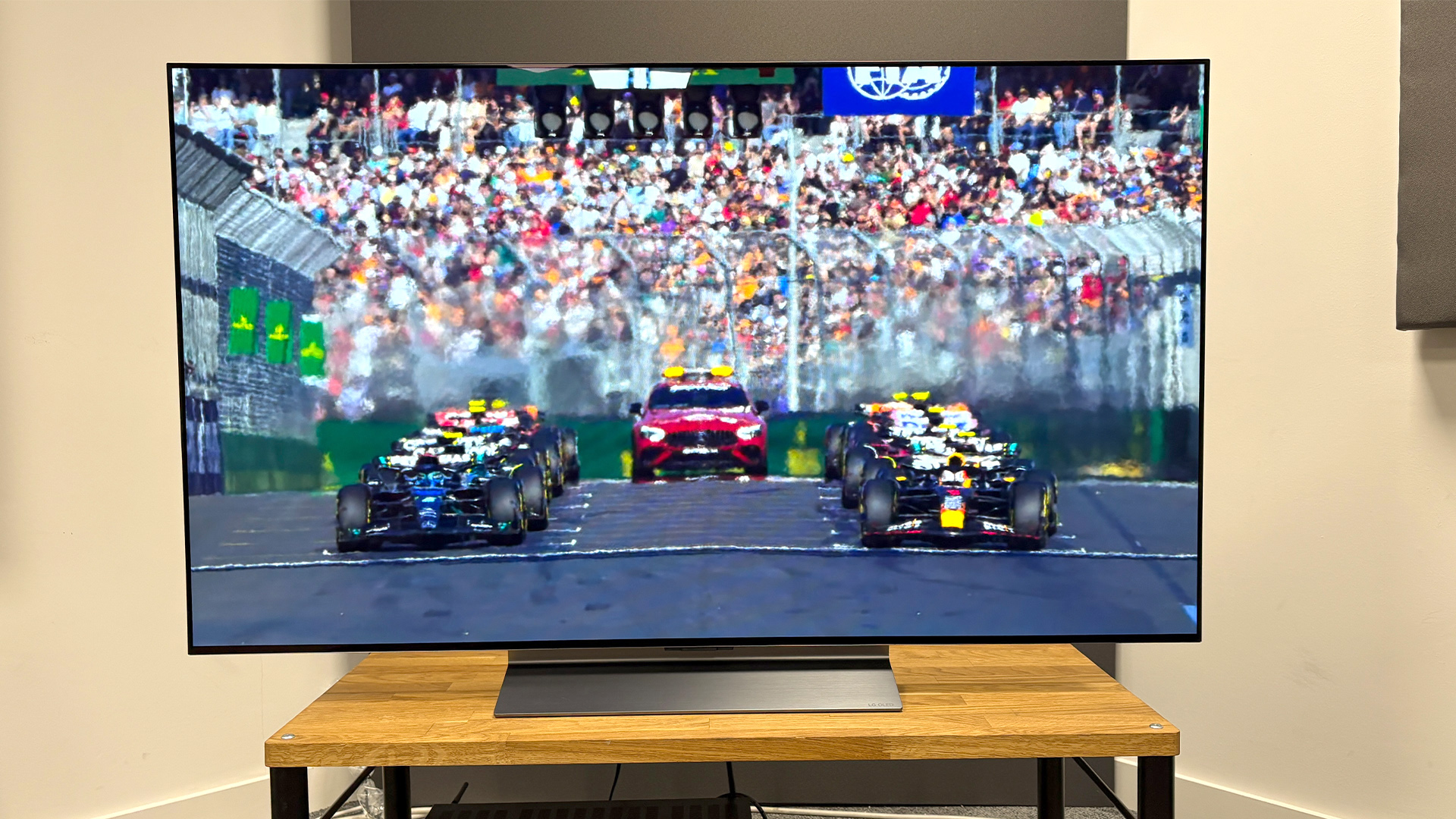

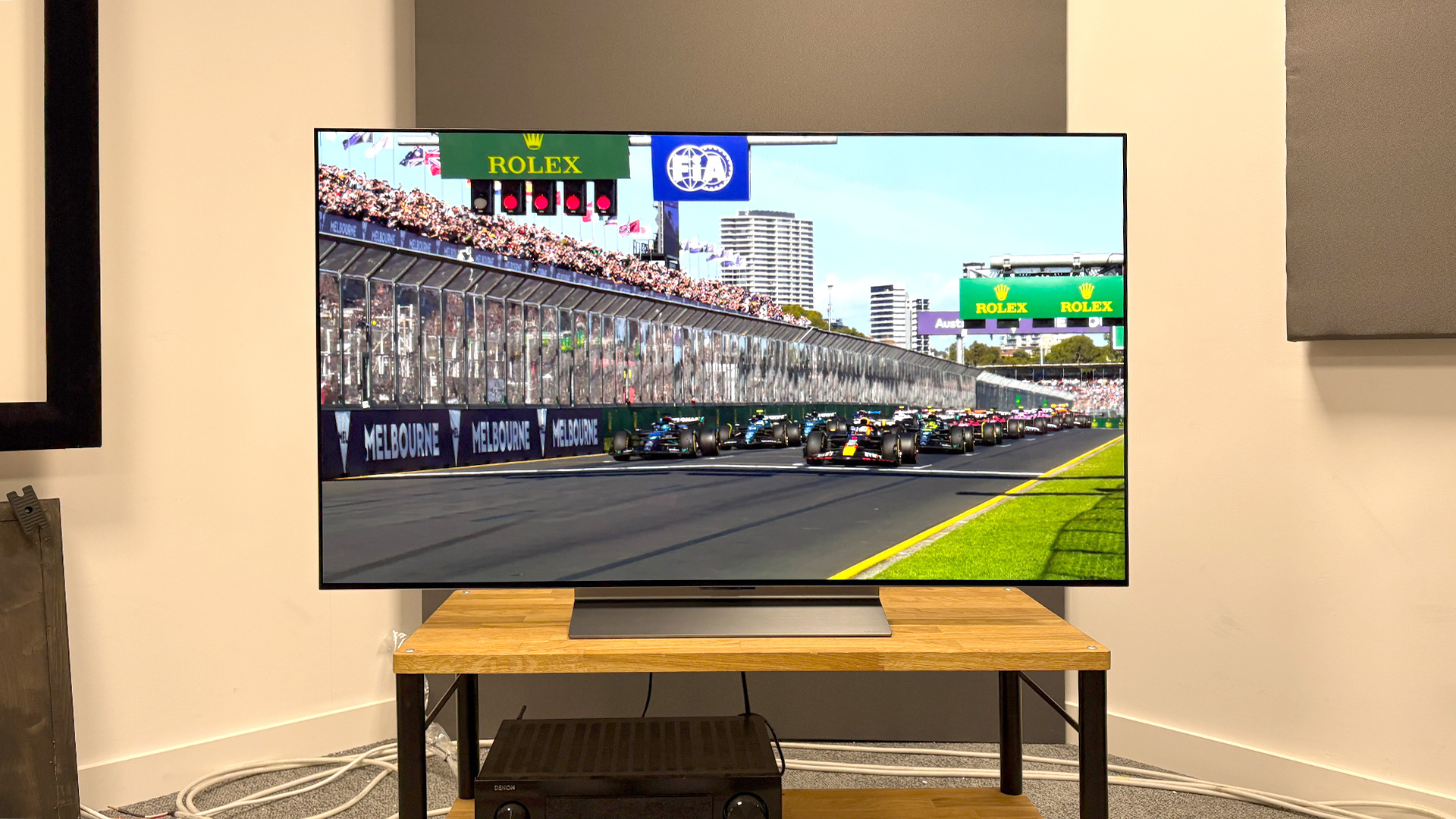
Specifications
Reasons to buy
Reasons to avoid
LG’s C-series has always been highly recommended for a reason, and the C5 continues that theme with careful refinement rather than revolution.
It doesn’t use the LG G5’s new four-stack panel or last year’s MLA tech, but under-the-hood updates – including a claimed brightness boost and Alpha 9 Gen 8 processing – yield a picture that’s richer, more solid, and more engaging than the LG C4.
In Filmmaker Mode (now with Dolby Vision where supported), the C5 balances authenticity and vibrancy beautifully. Low-light colour volume is a particular strength, lending warmth and nuance to skin tones and shaded textures, while the extra headroom helps HDR highlights glint convincingly.
Sharpness is crisp but never edgy, and motion is deft enough to keep fast action clean without introducing artefacts. For HDR10 content, LG’s Dynamic Tone Mapping is off by default – switching it on unleashes the set’s full brightness potential, as recommended in our review.
As ever, gaming support is impressive. All four HDMI ports are full-bandwidth 2.1, with 4K/144Hz, VRR, ALLM, HGiG, and a Dolby Vision game mode, plus extremely low input lag.
Elsewhere, webOS 25 is responsive and comprehensive, with a smattering of LG’s new AI niceties – an on-device chatbot that can apply common tweaks on request, and voice-based profile switching that recognises who’s speaking and serves personalised recommendations.
As with most TVS, sound is the weak spot. The 2.2-channel, 40W system is fine for everyday TV – dialogue is clear and there’s some sense of space – but it lacks bass depth and overall drama.
The AI Sound mode can sound harsh, so steer clear – one of the best soundbars will make a sensible partner for the C5’s superb picture quality.
Read the full LG C5 review
Attributes | Notes | Rating |
|---|---|---|
Picture | Rich, vibrant OLED images with excellent low-light colour and HDR performance | ★★★★★ |
Sound | The C5's 2.2-channel 40W system is fine for dialogue but lacks weight | ★★★☆☆ |
Features | Four HDMI 2.1 ports, class-leading gaming support, and slick webOS 25 | ★★★★★ |
The best mid-range 65-inch TV
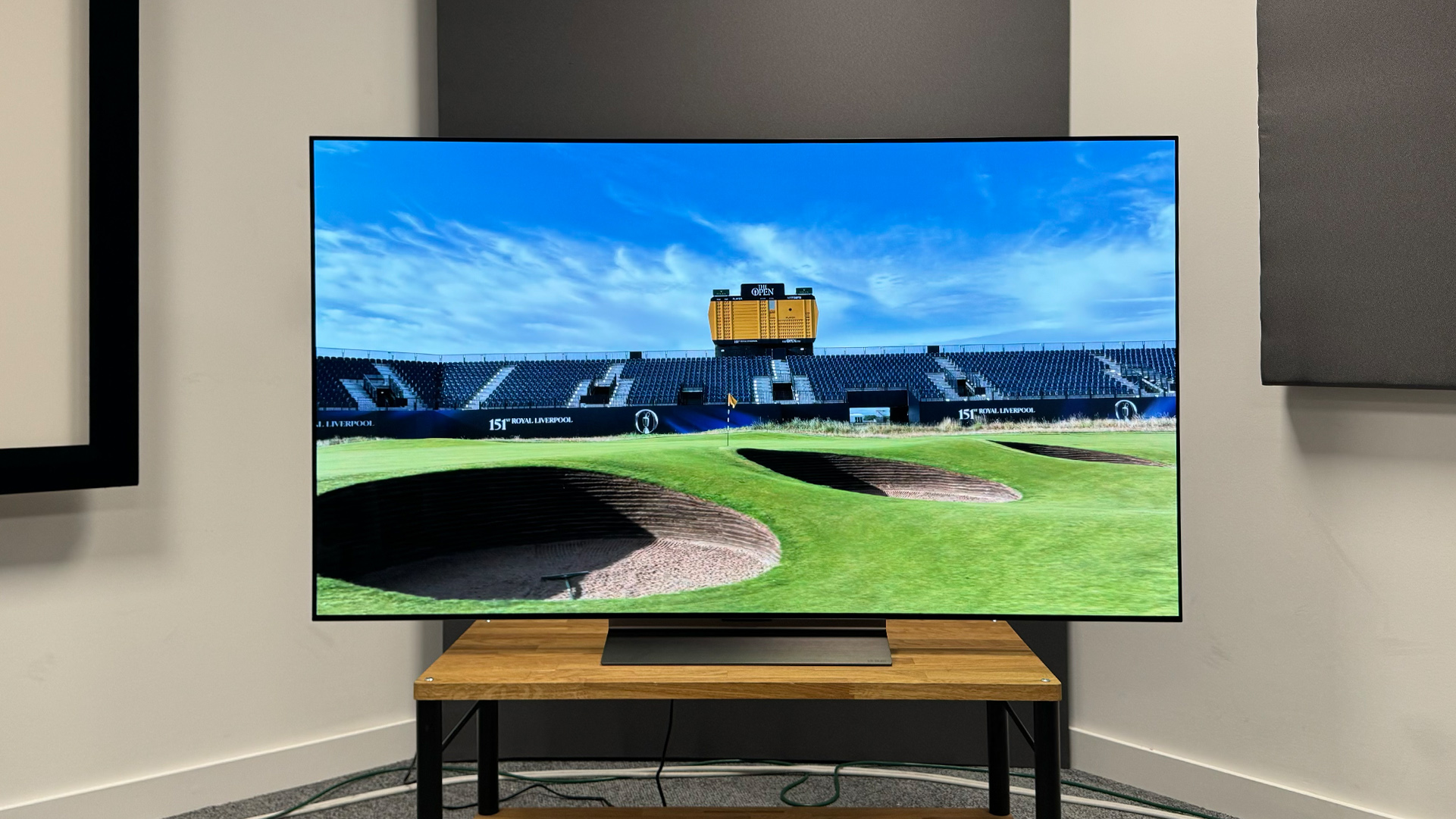
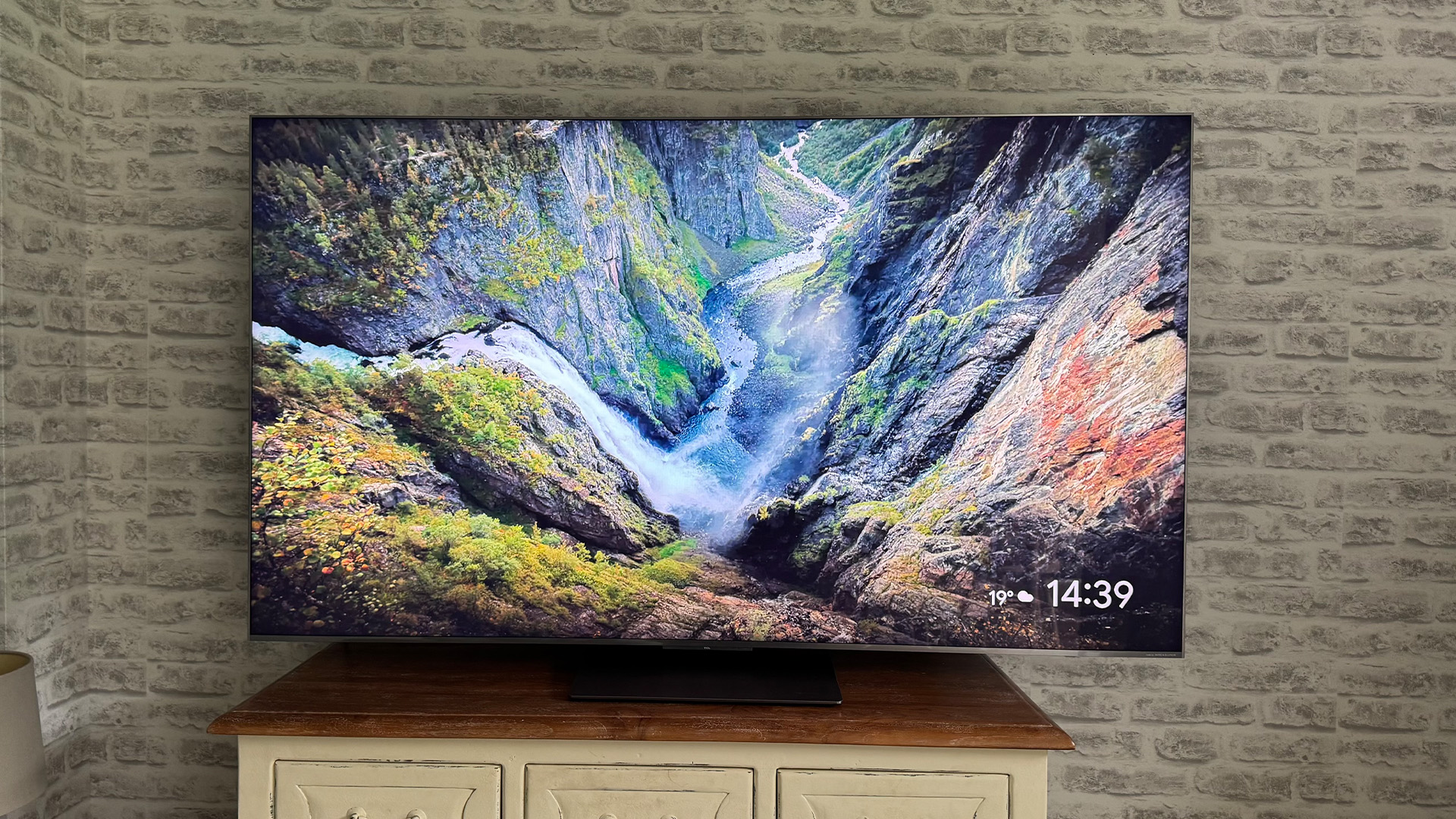
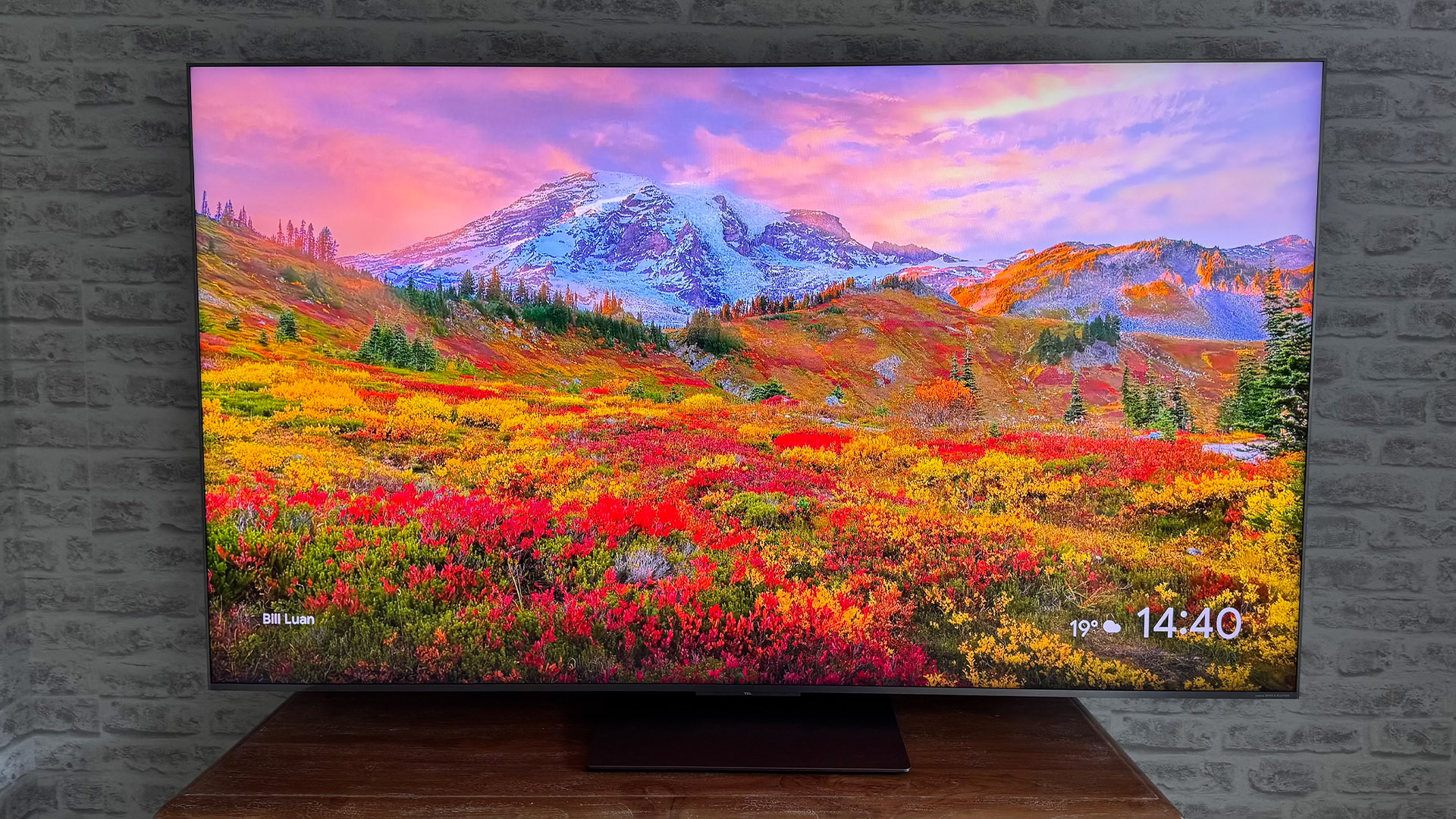

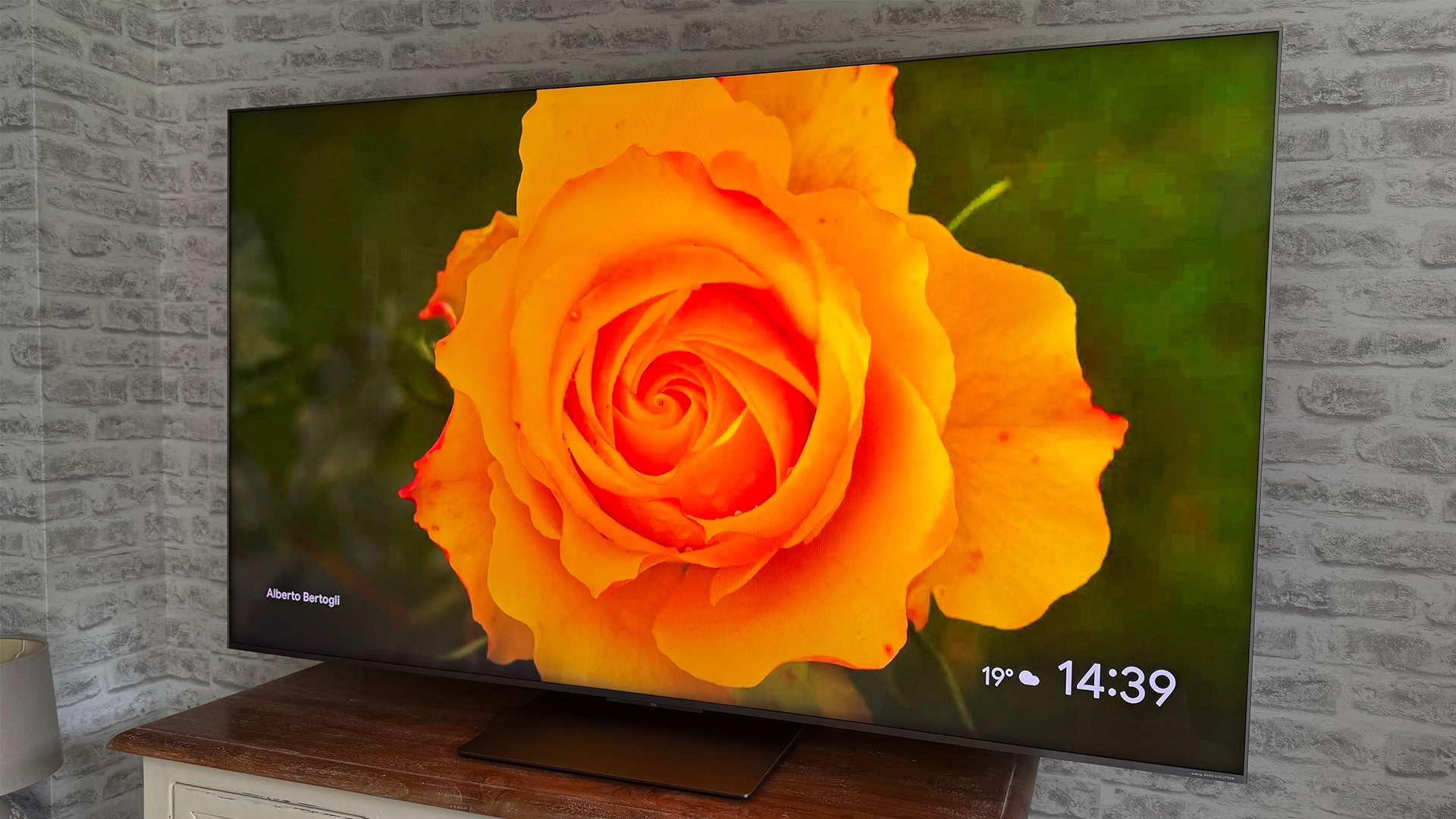
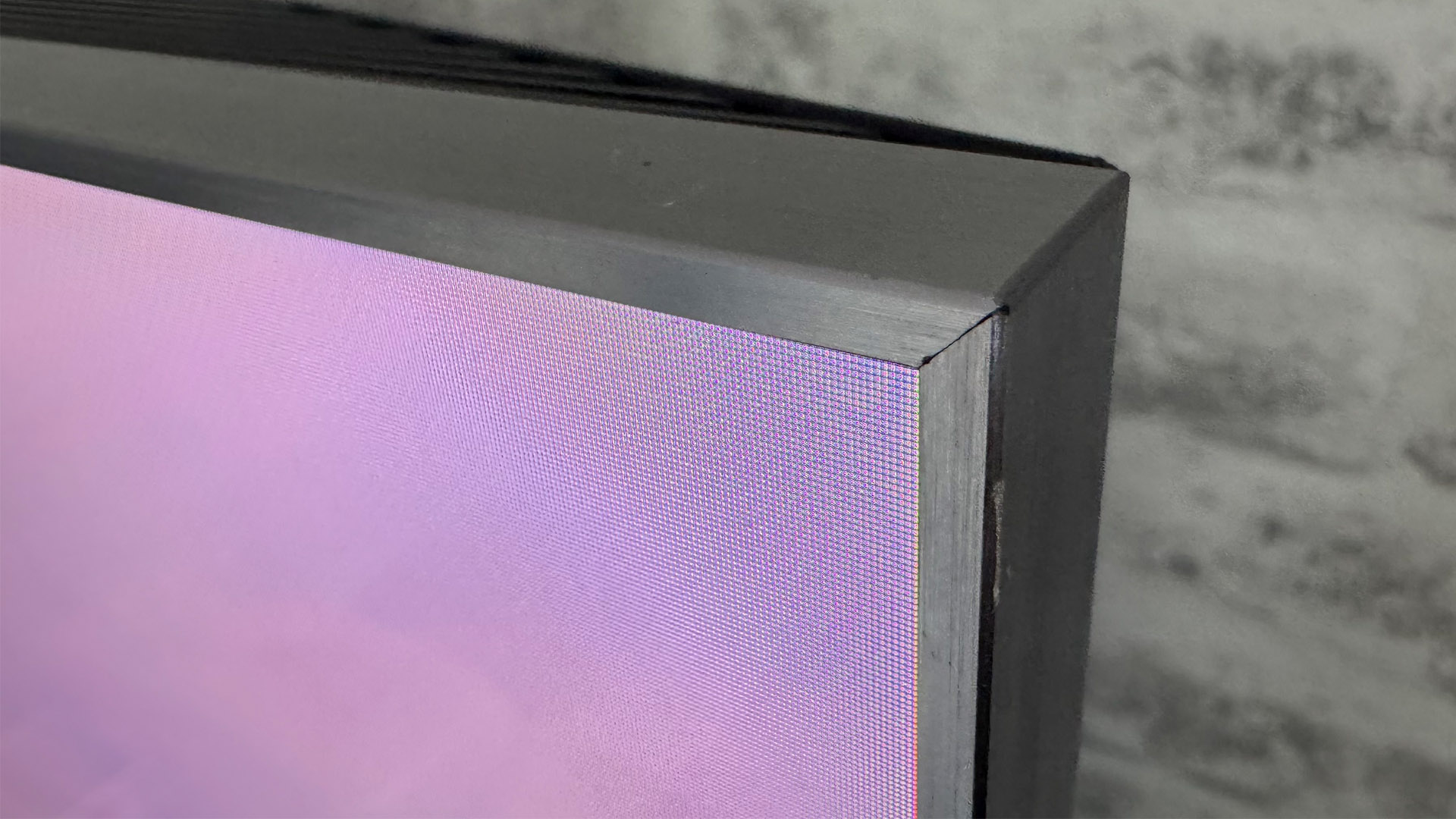
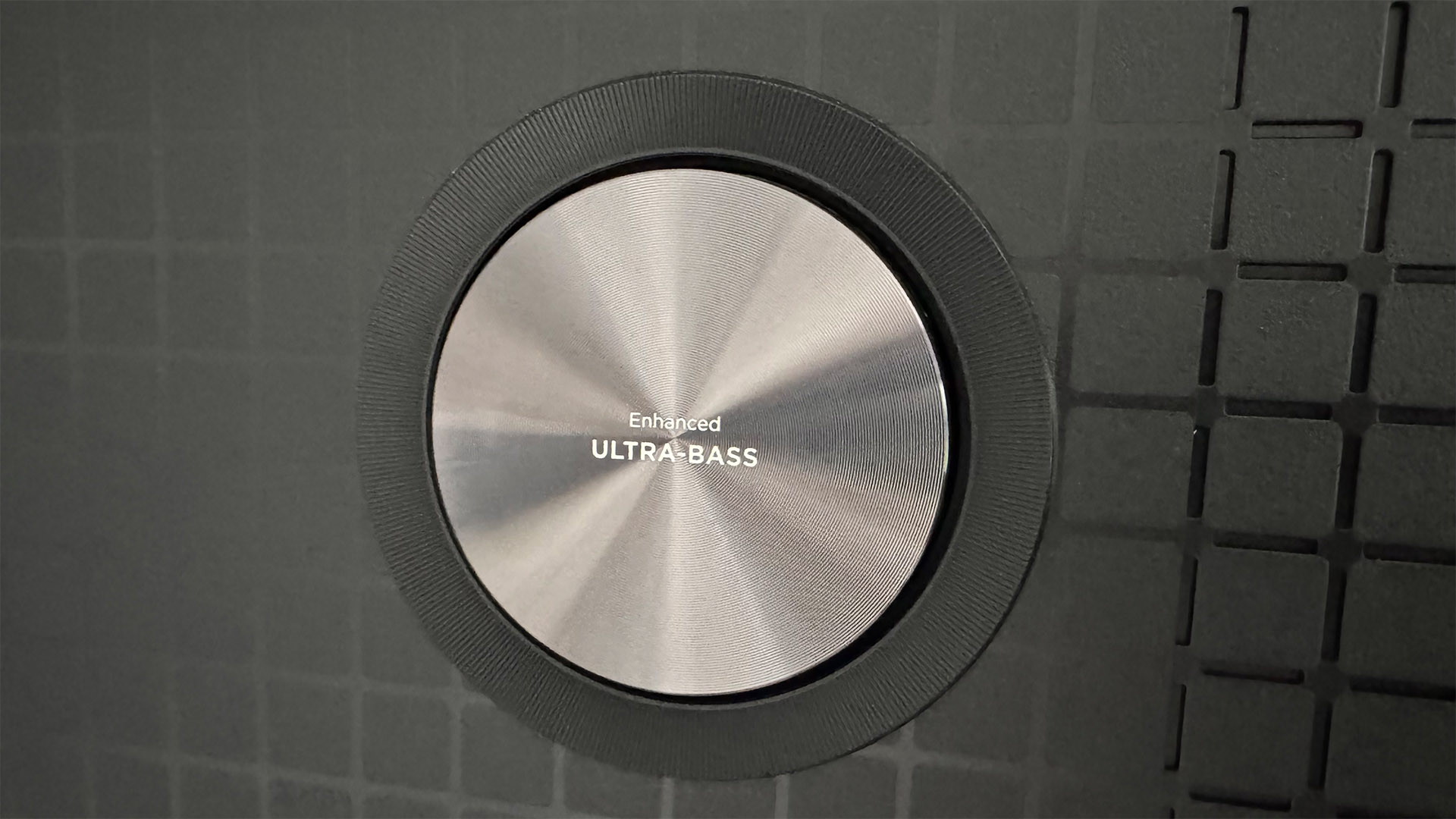
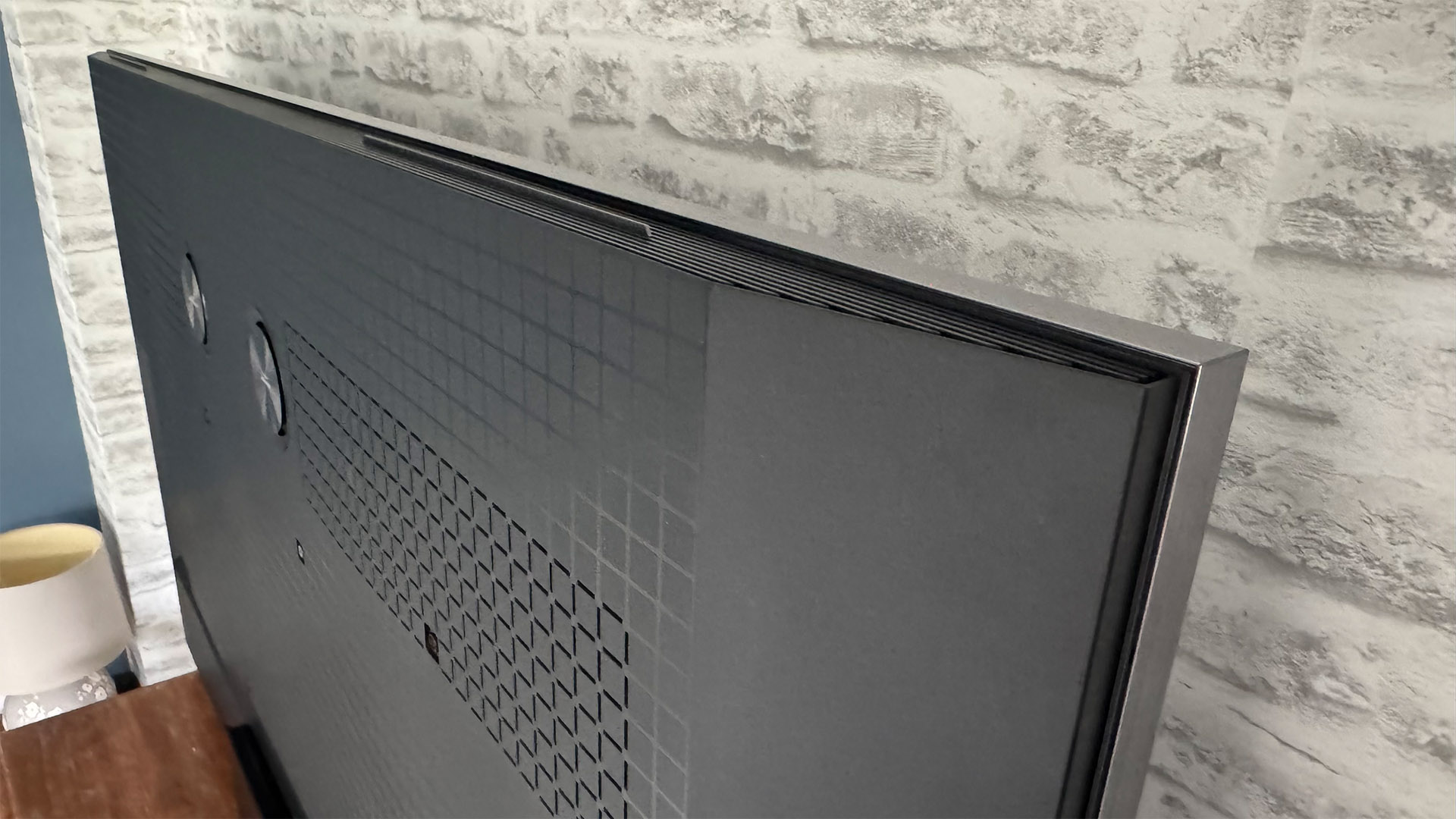
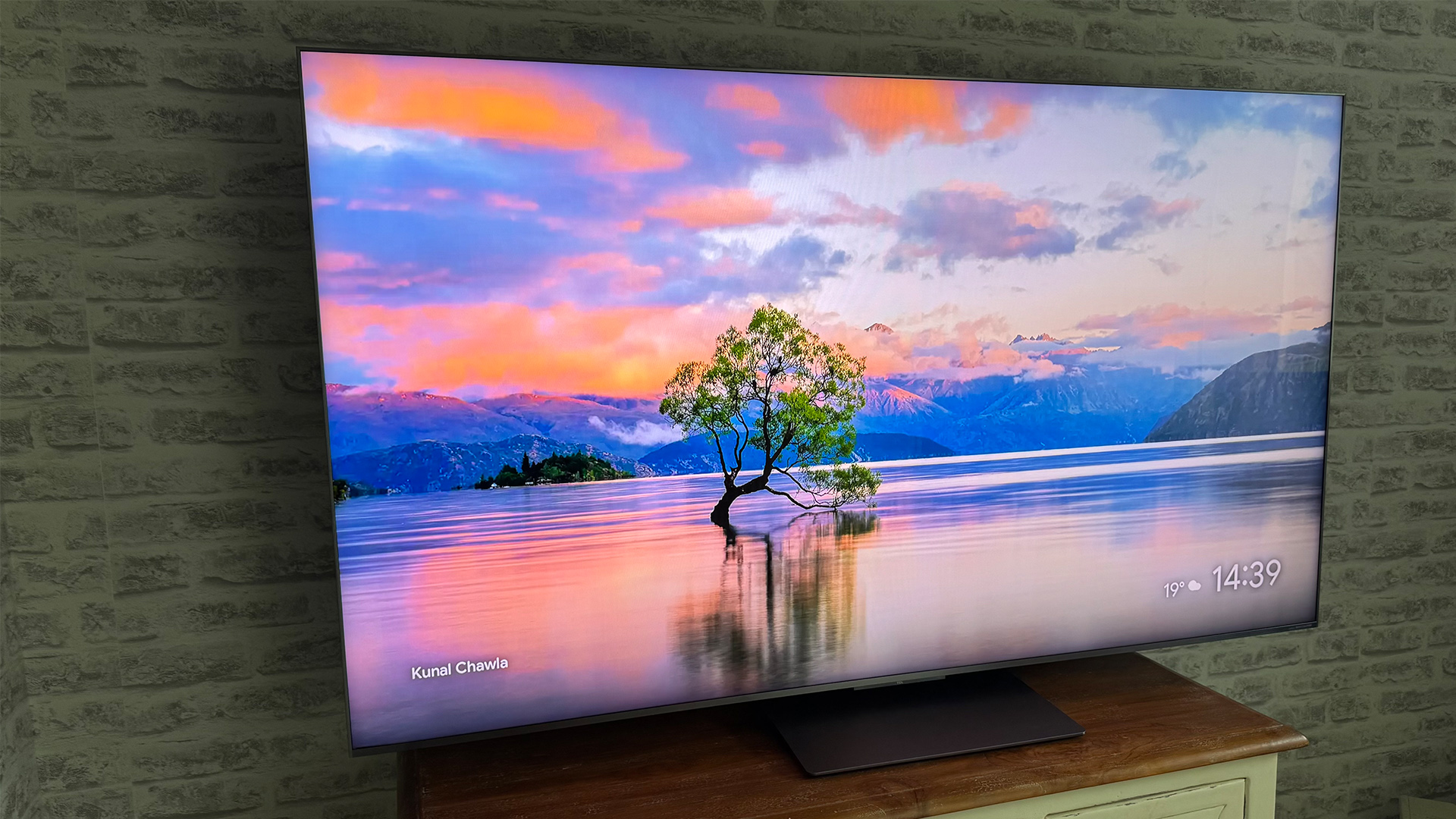
Specifications
Reasons to buy
Reasons to avoid
If you’re looking for maximum performance per pound, TCL’s 65C7K is a mini LED standout. It looks and feels more premium than its price suggests, with an anti-reflection treatment that aids daylight viewing, and a tidy central stand that keeps cabling controlled.
Looks aside, picture quality is the star. A dense grid of local dimming zones and TCL’s AiPQ Pro processing combine to deliver bright, punchy HDR peaks alongside deep, neutral blacks, with minimal haloing around highlights.
Shadow detail is excellent, light control stays consistent through scene cuts, and the set resists the “pumping” you can see on lesser implementations. Colours are a joy too – the Standard preset is bold and cinematic without tipping into garishness, while Filmmaker Mode reins things in for accuracy, yet avoids looking drab.
Clarity with native 4K is high, and the upscaler adds density to HD without exaggerating noise or sharpening edges. Motion is handled with restraint as well – films remain clean and fluid without soap-opera sheen. Side-by-side with TCL’s step-up C8K, the C7K can actually look richer and more rounded in its Standard preset, even if Movie/Filmmaker modes tilt slightly in the C8K’s favour.
Google TV is fast and fully stocked, including the main UK catch-up services. Gaming support is strong for the money, with 4K/144Hz, VRR (including AMD FreeSync Premium Pro), ALLM, a low-latency Dolby Vision Game mode, and a handy Game Bar. Connectivity is generous, though only two of the four HDMI ports are full-bandwidth 2.1, and one does eARC duty.
Audio, co-developed with Bang & Olufsen, is clean and detailed through the mids and treble. It can sound a little light in the bass, and very deep effects may betray some strain compared with pricier sets, but overall it’s capable and articulate for the class.
In short, and value considered, the 65C7K is a superb all-rounder.
Read the full TCL C7K review
Attributes | Notes | Rating |
|---|---|---|
Picture | Bold HDR, deep blacks and impressive consistency for the price. | ★★★★★ |
Sound | Clean and detailed, but as with most built-in TV speakers, light on bass | ★★★★☆ |
Features | Strong gaming support, Google TV smarts, and two HDMI 2.1 ports | ★★★★☆ |
The best budget 65-inch TV (UK)
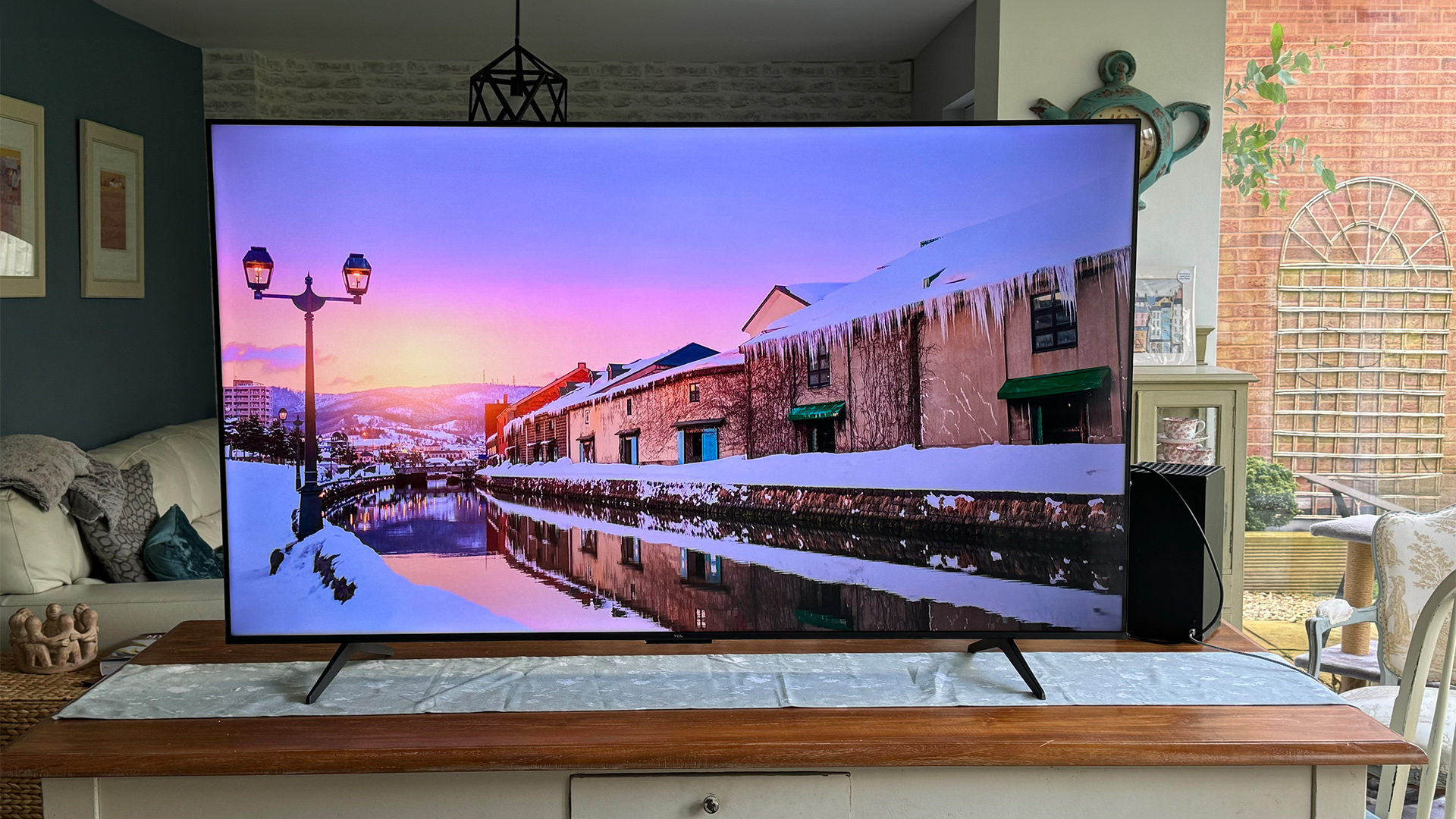
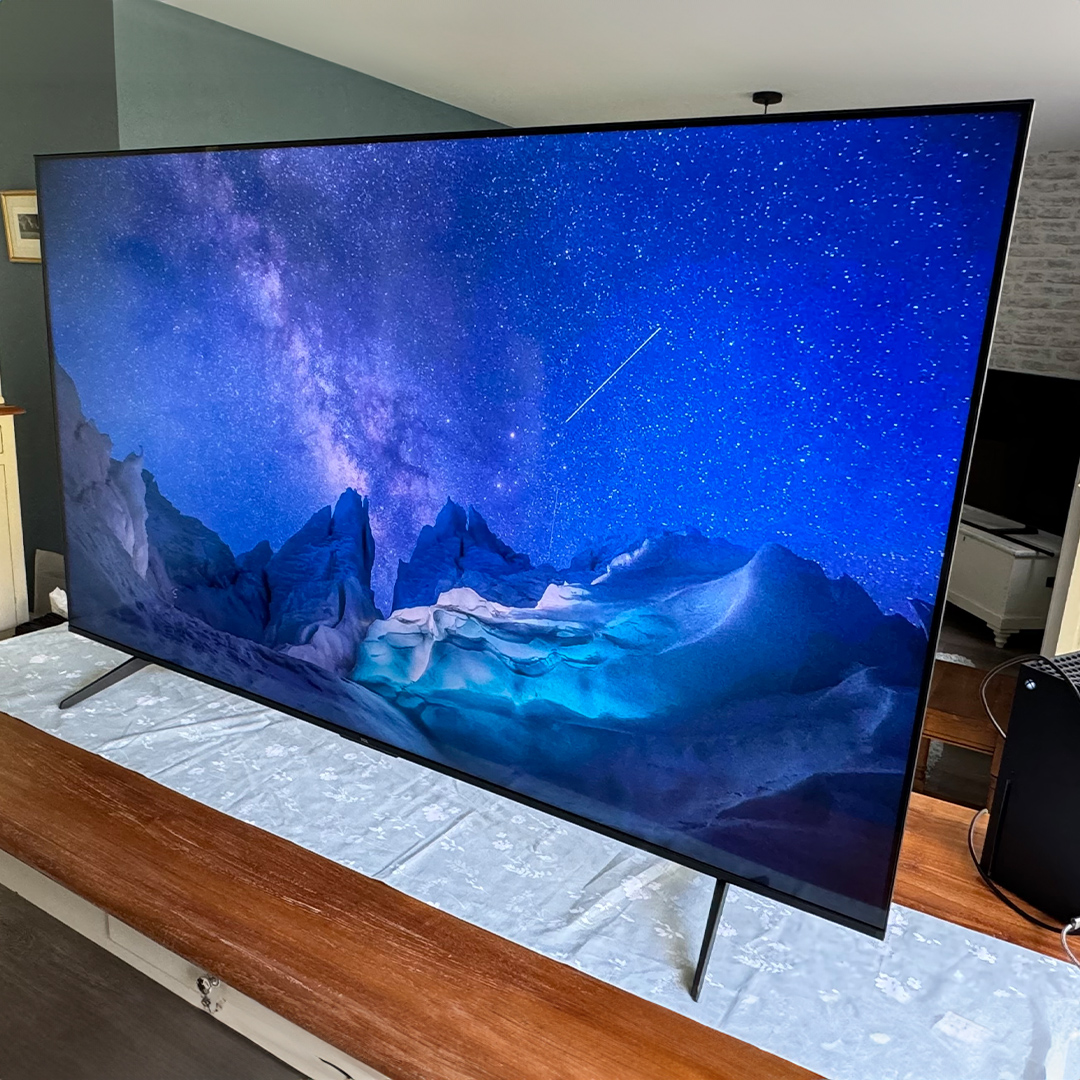
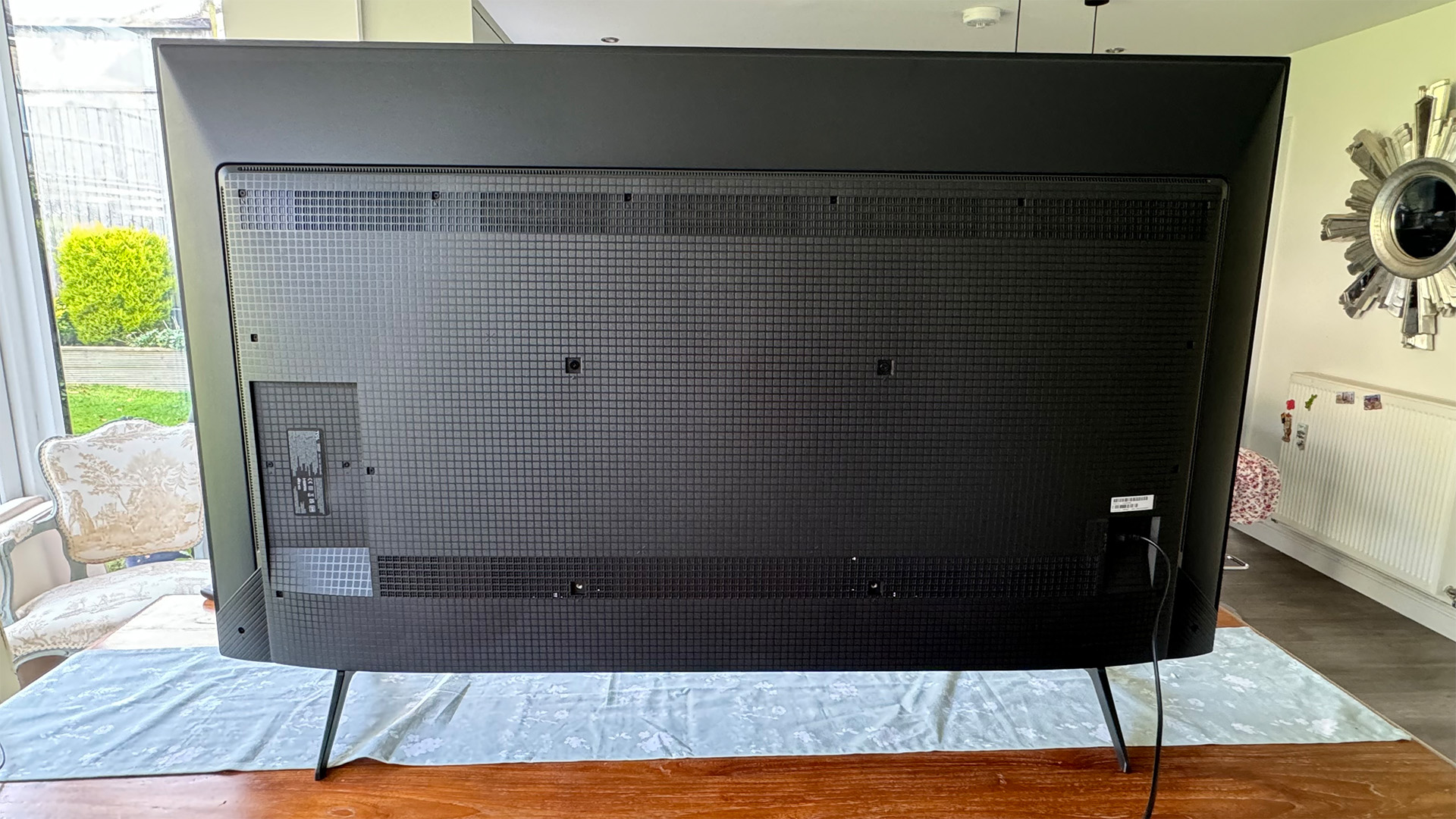
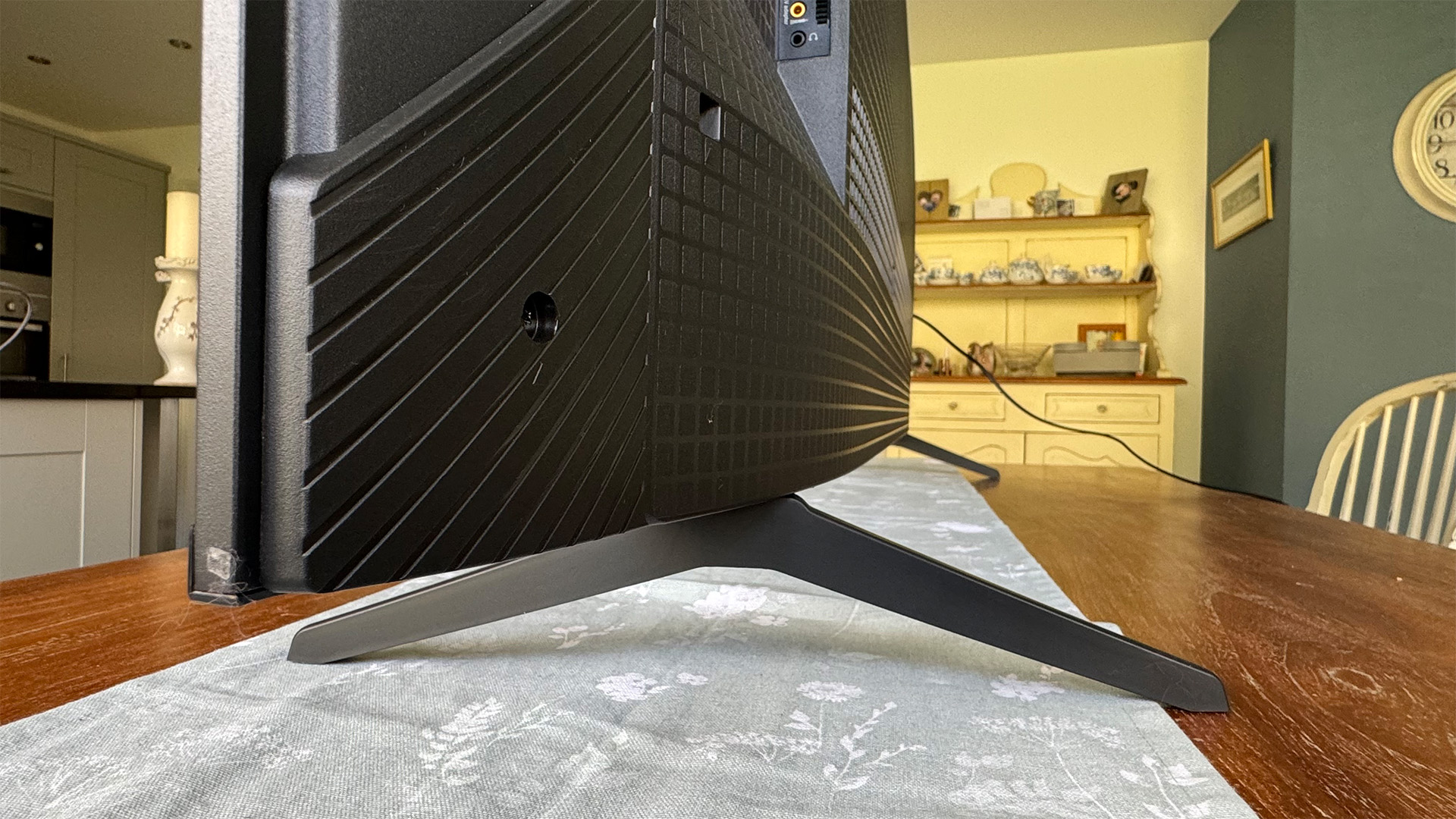
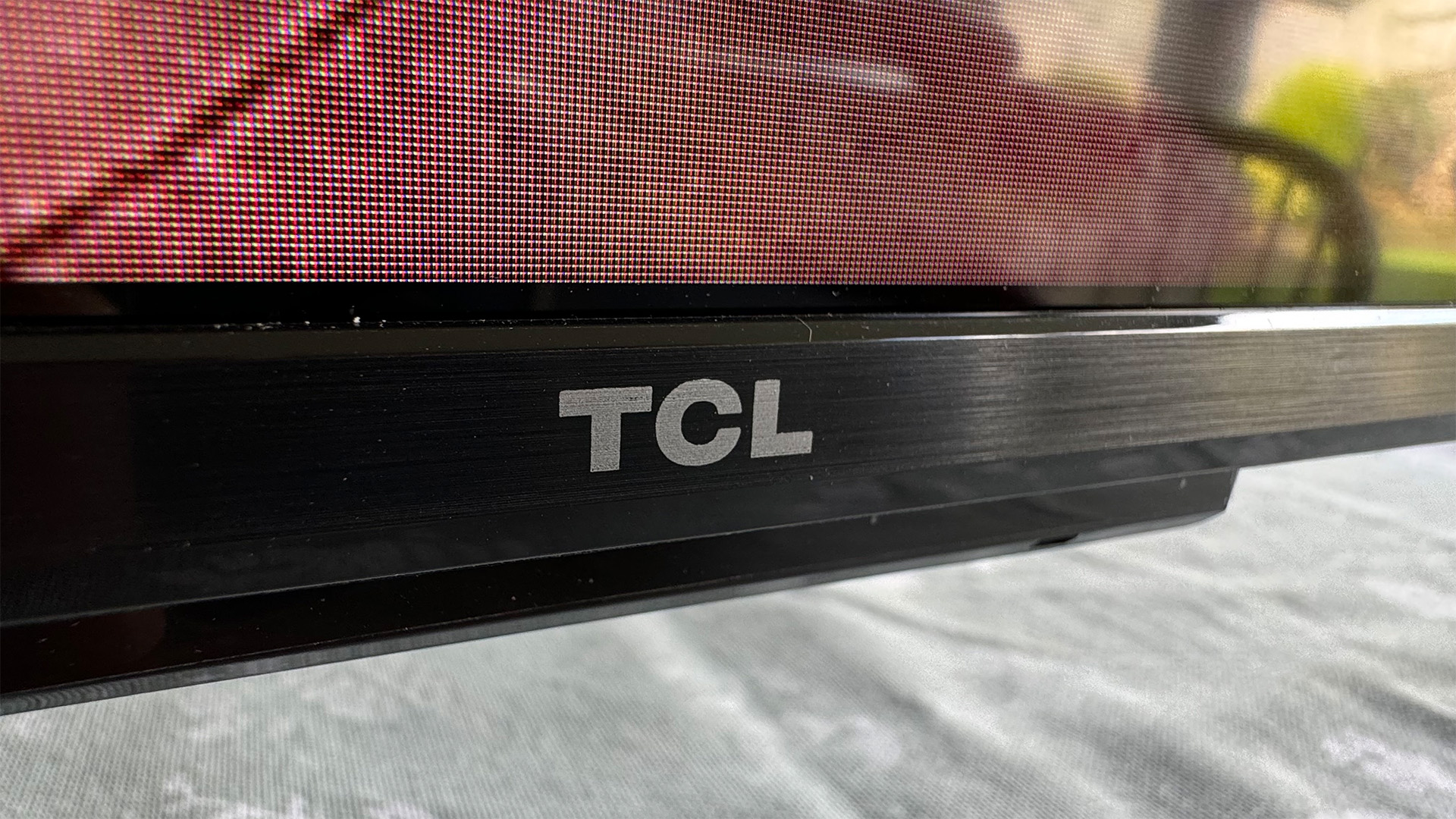
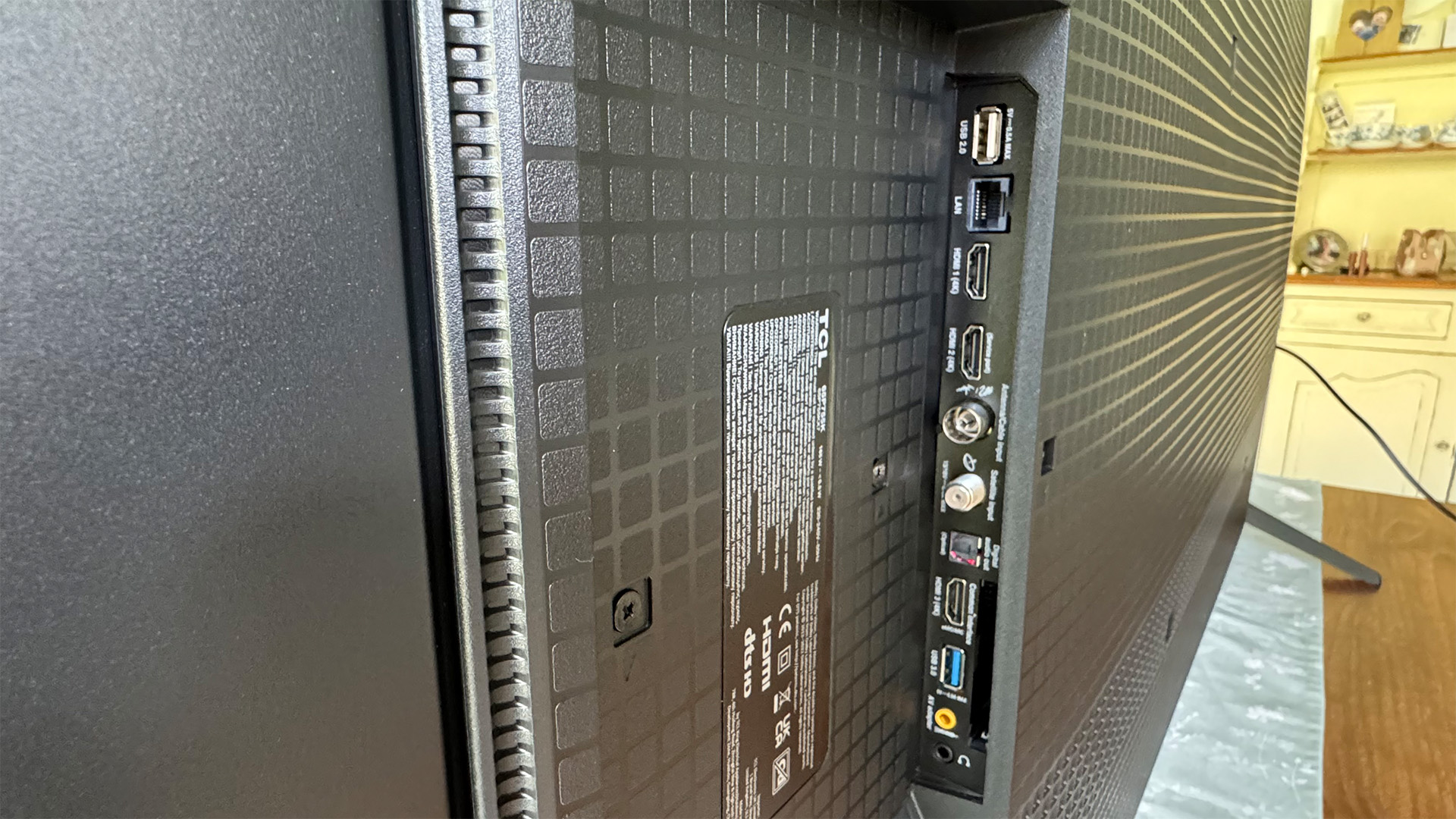
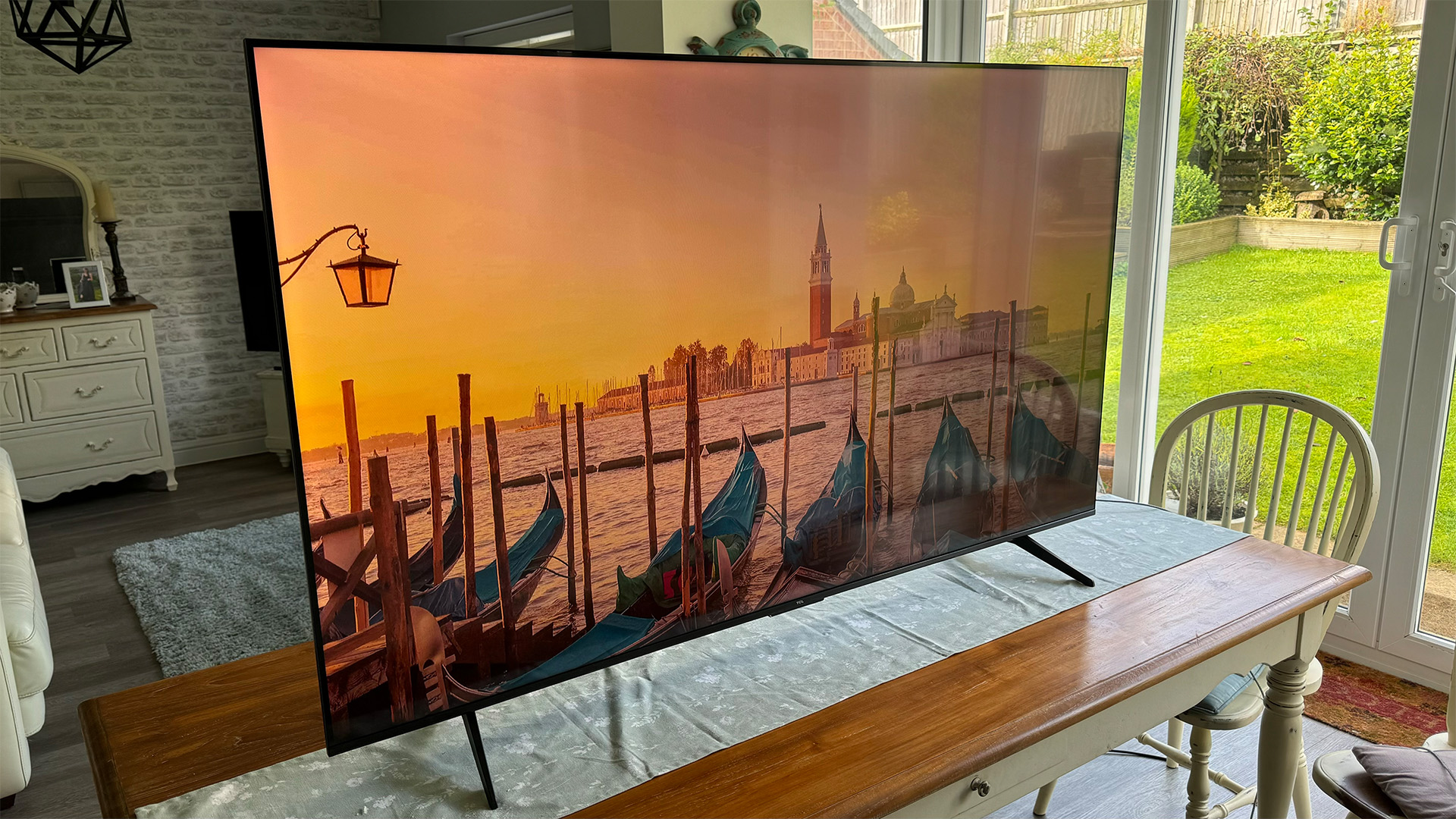
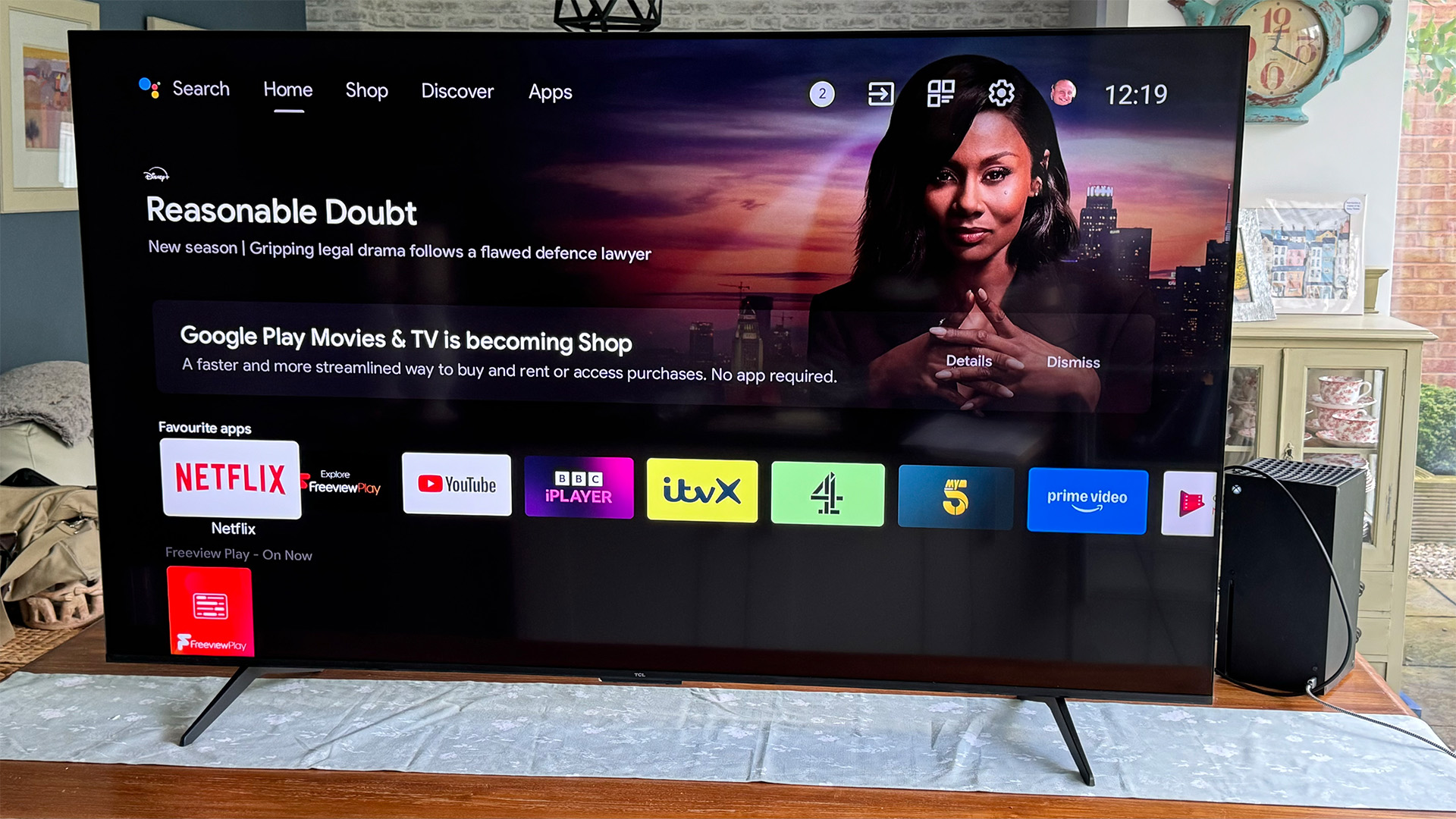
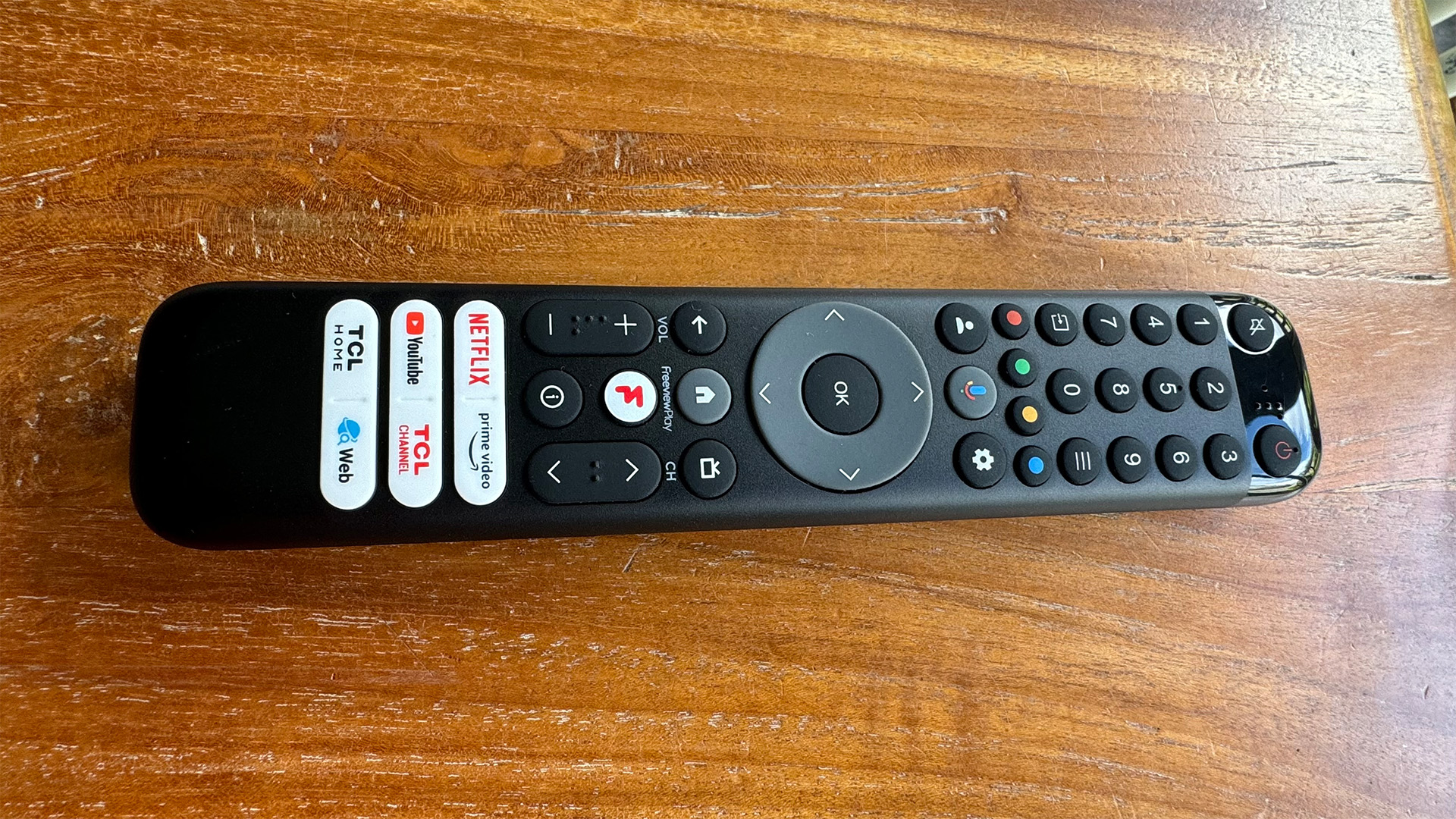
Specifications
Reasons to buy
Reasons to avoid
65-inch TVs that cost less than £500 are pretty rare to begin with, and examples that are actually decent are like hens' teeth – yet that's precisely what we have here.
It won't surprise you to learn that the design is pretty basic and plasticky, but the P755K at least isn't horribly chunky and its remote is quite nice to hold and use despite the budget materials.
There are just three HDMI sockets, but they support advanced features such as eARC, VRR and ALLM. And while the panel has just a 60Hz refresh rate, it can support 120Hz gaming by reducing the resolution – a sacrifice that some may feel is worth making for improved competitiveness in online matches.
HDR support is superb, with all four of the formats of note being supported, and while there's no local-dimming, the P755K sports a VA panel with a direct LED backlight, which should make it brighter than the edge-lit, IPS-panelled TVs that you usually find at this level.
Surprisingly, though, it's the vibrancy of the P755K's colours that is most impressive, despite the TV lacking the Quantum Dots of more expensive models in TCL's range. That vibrancy comes with subtlety and balance, too, and the TV looks cinematically authentic overall.
Overall brightness isn't actually that high, but the TV employs intelligent tone mapping so that you do still feel the contrasty benefits of HDR, and there's good detail and sharpness, particularly with 4K sources.
It's fair to say that black depth isn't amazing and motion is a little soft. There's a strange bug when watching Dolby Vision from external sources, too, though this thankfully isn't an issue with streamed Dolby Vision content. The only other thing to bear in mind is that the sound is a bit weedy, so it's worth budgeting for one of the best budget soundbars if you can.
Even so, this is an impressive TV for the money. If you're looking for a substantial TV for a small outlay, this is the one we recommend.
Read the full TCL P755K review
Attributes | Notes | Rating |
|---|---|---|
Picture | Mini LED with 1008 zones produces punchy HDR, deep blacks and vibrant colour | ★★★★★ |
Sound | Bang & Olufsen-tuned system is clear, but light in bass | ★★★★☆ |
Features | Google TV, 4K/144Hz gaming support and two HDMI 2.1 ports make for a decent features set at this price | ★★★★☆ |
The best budget 65-inch TV (US)
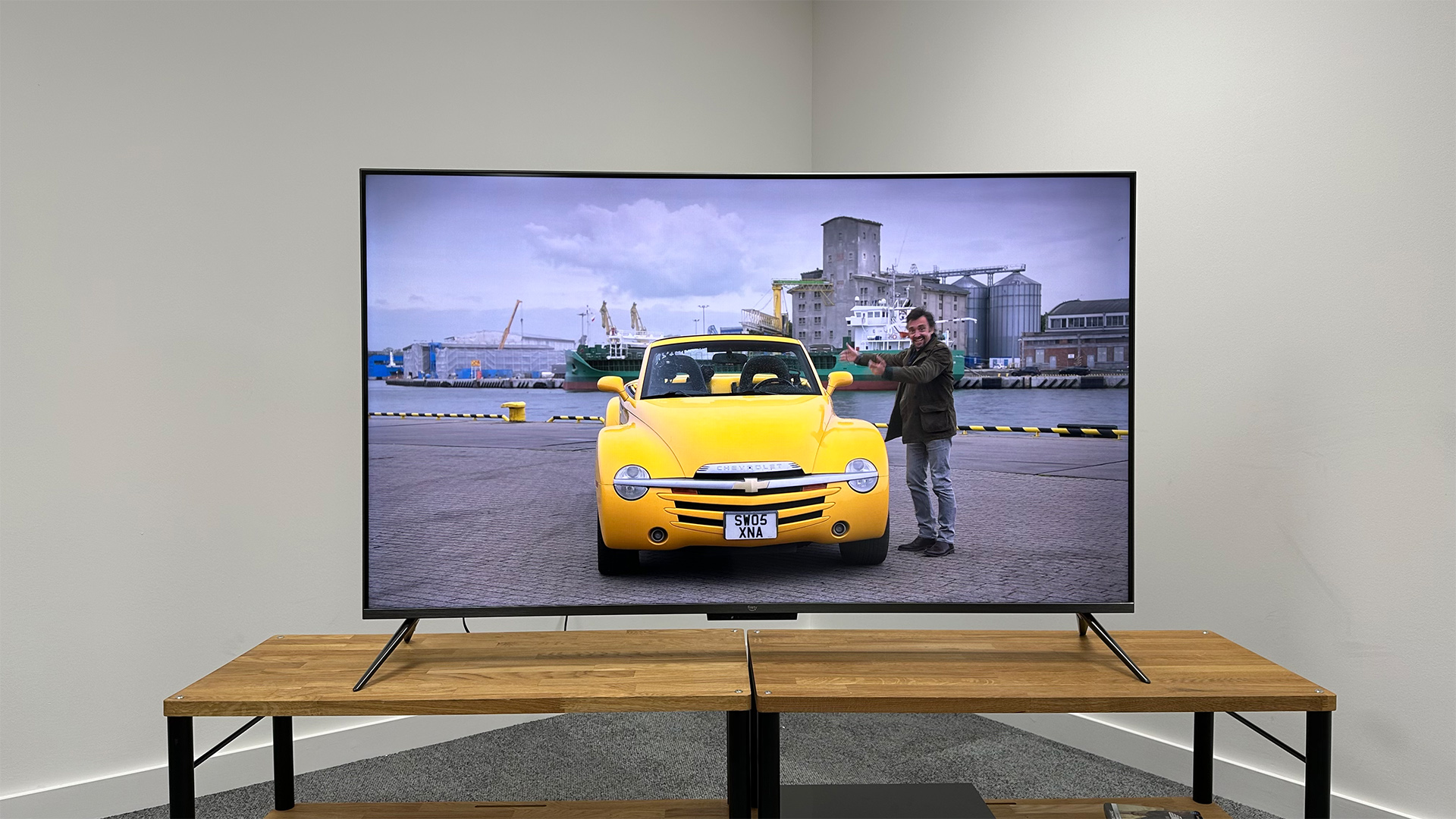
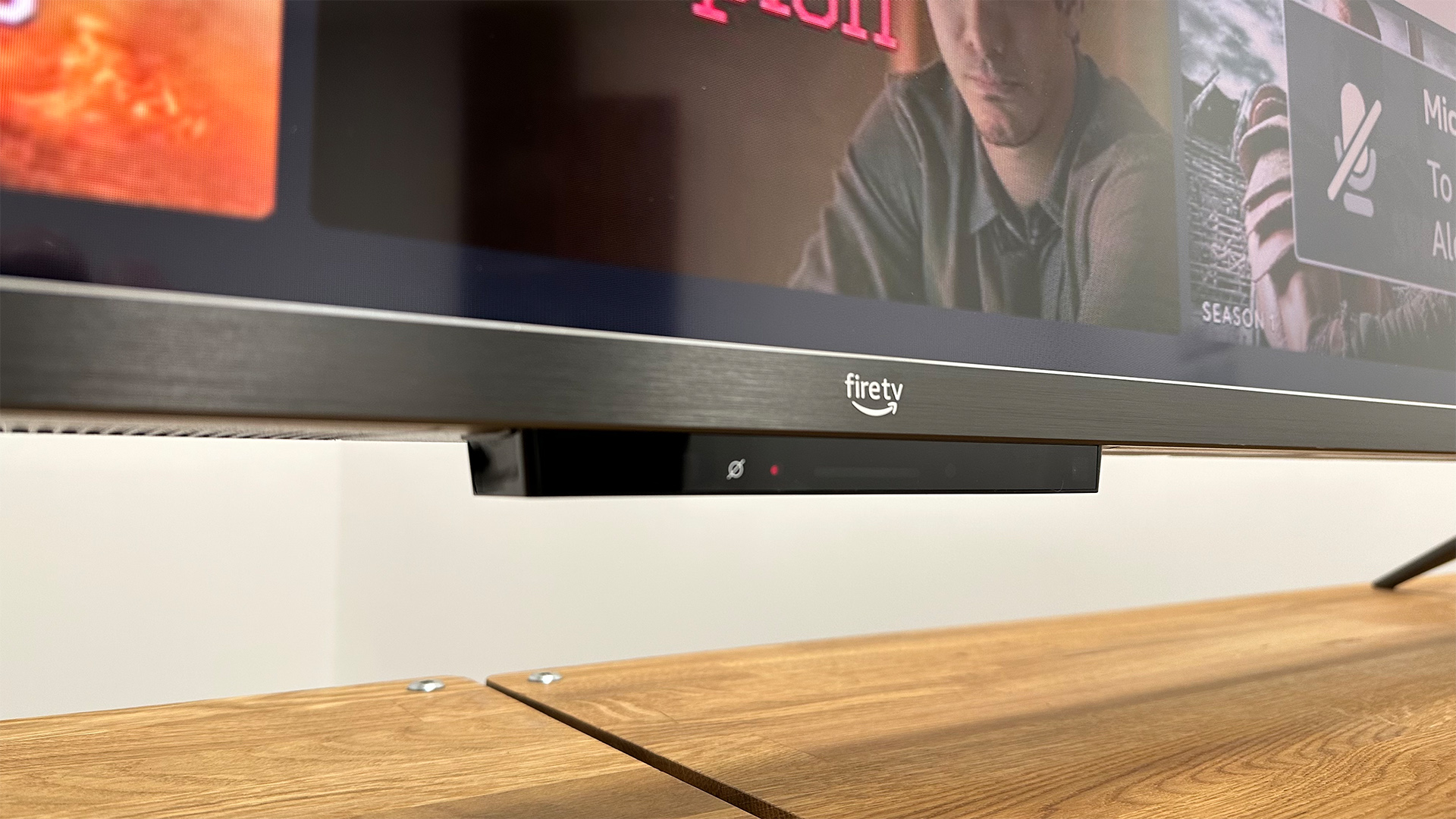
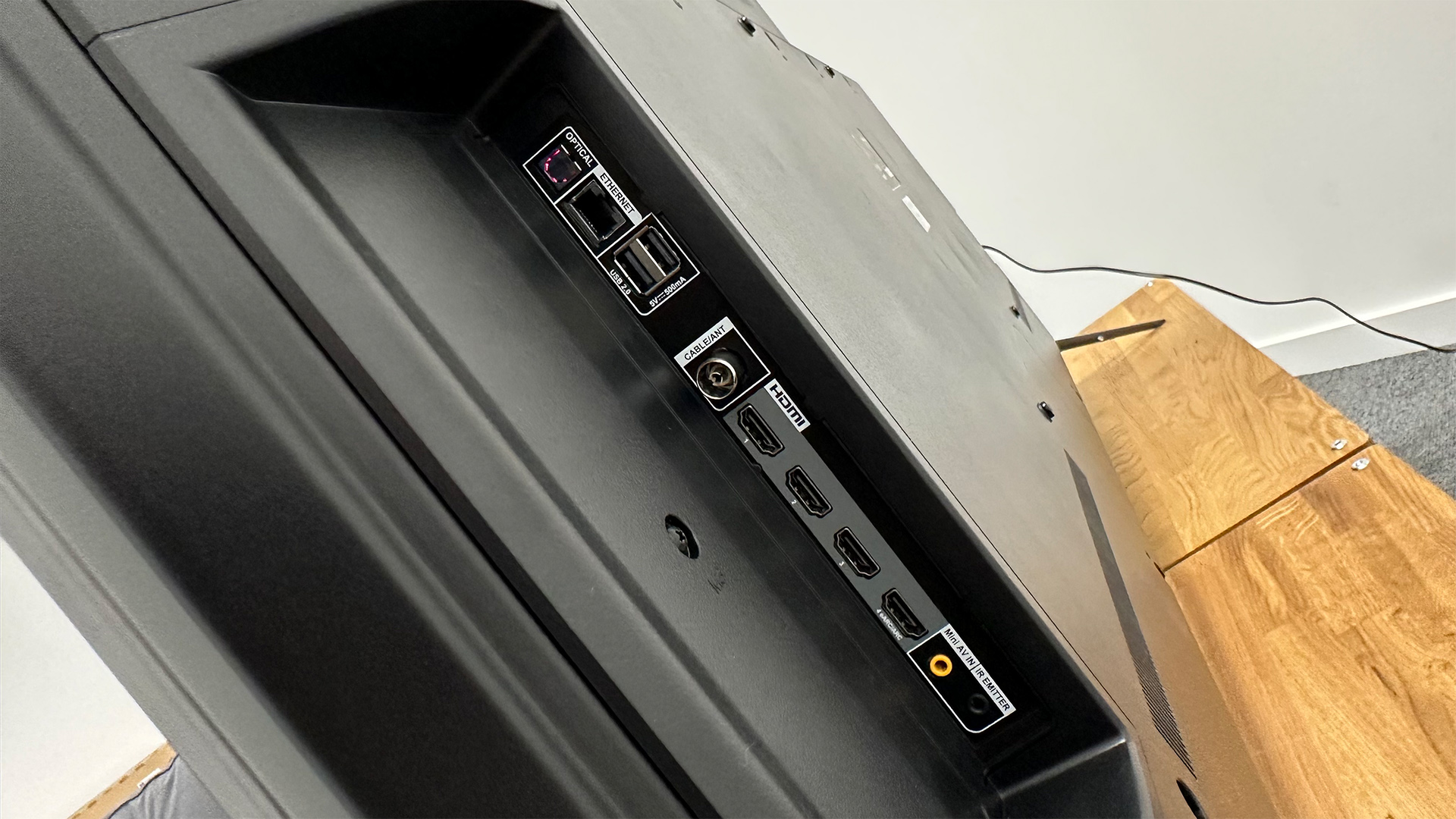
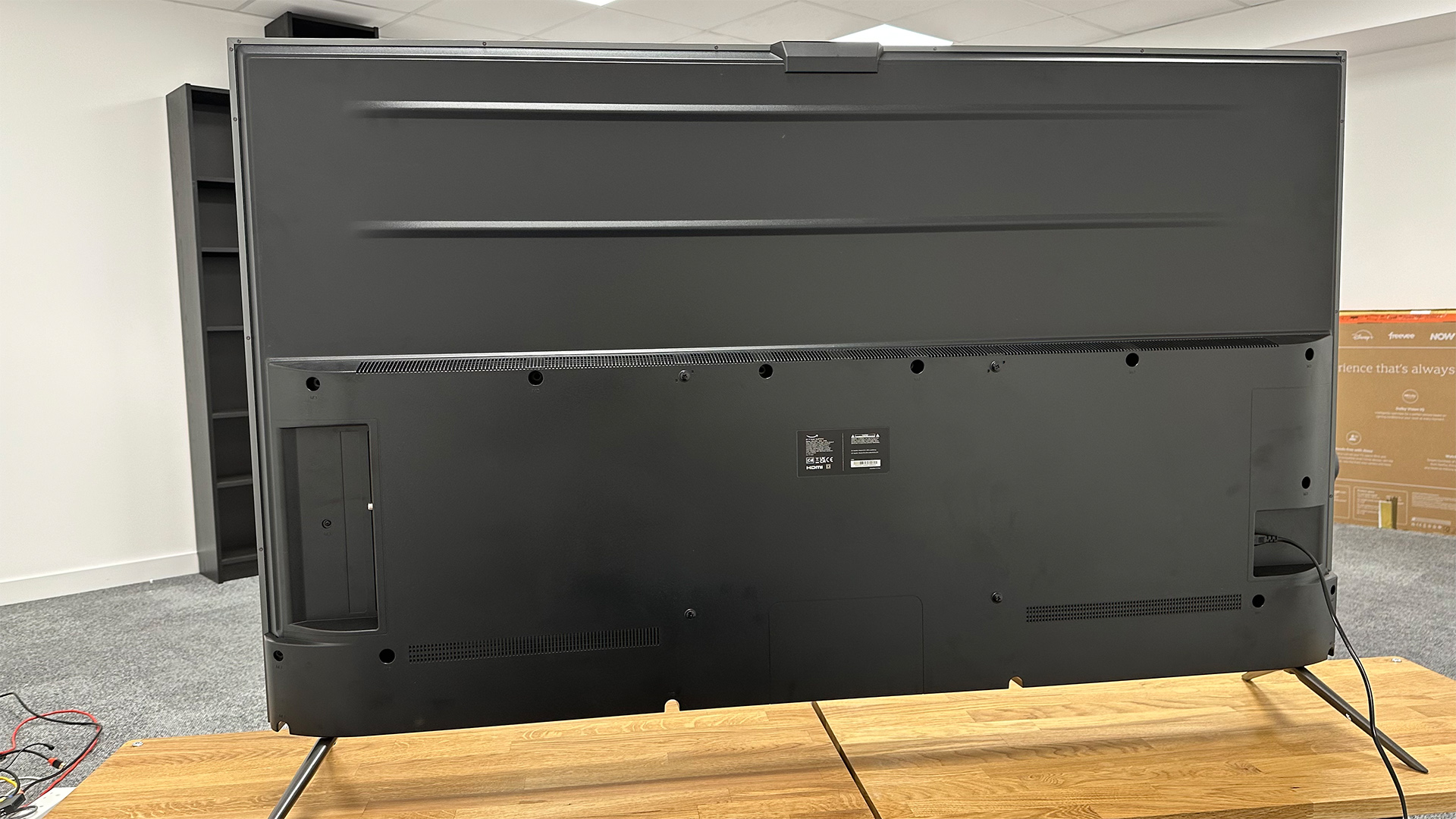
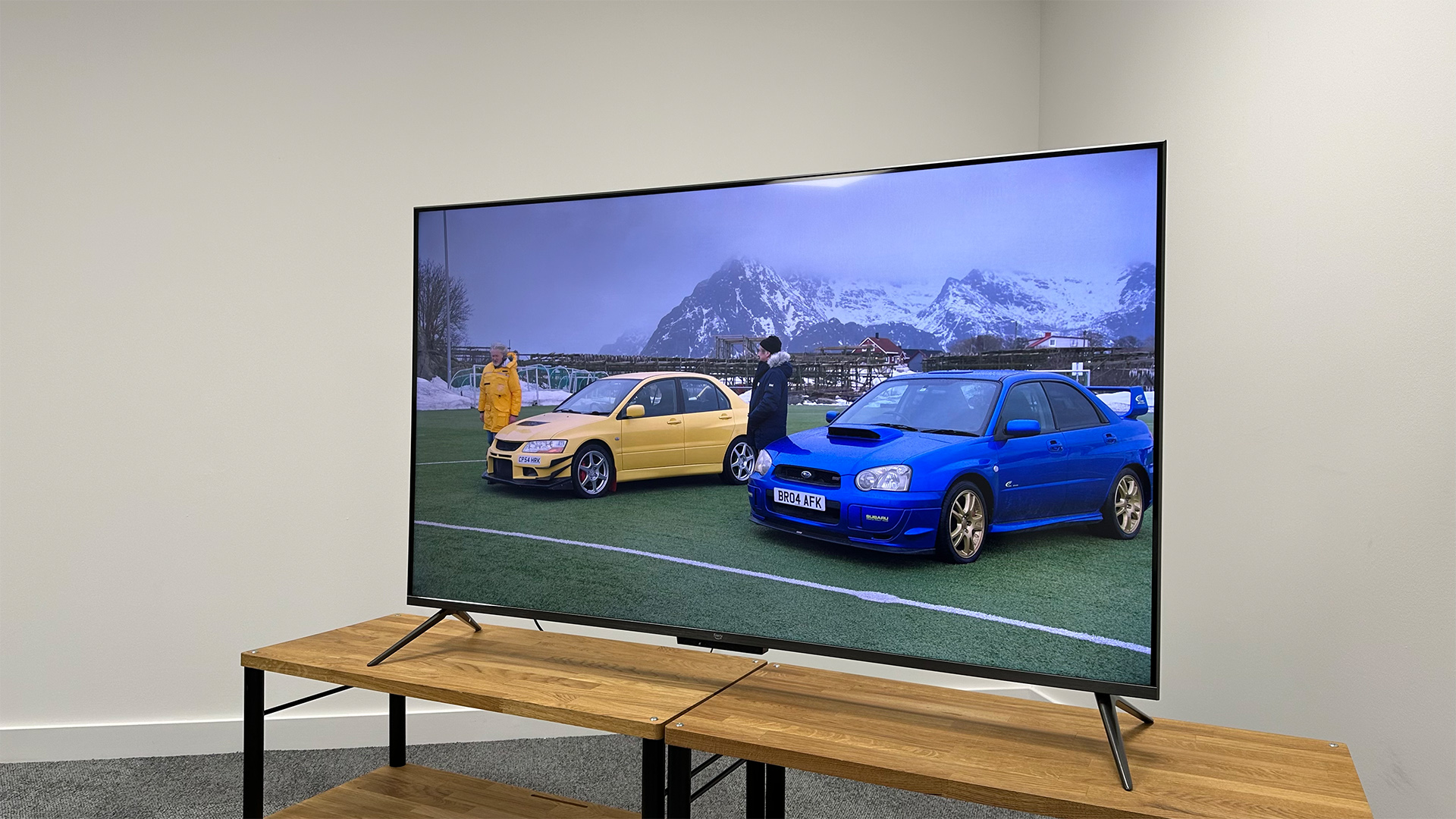
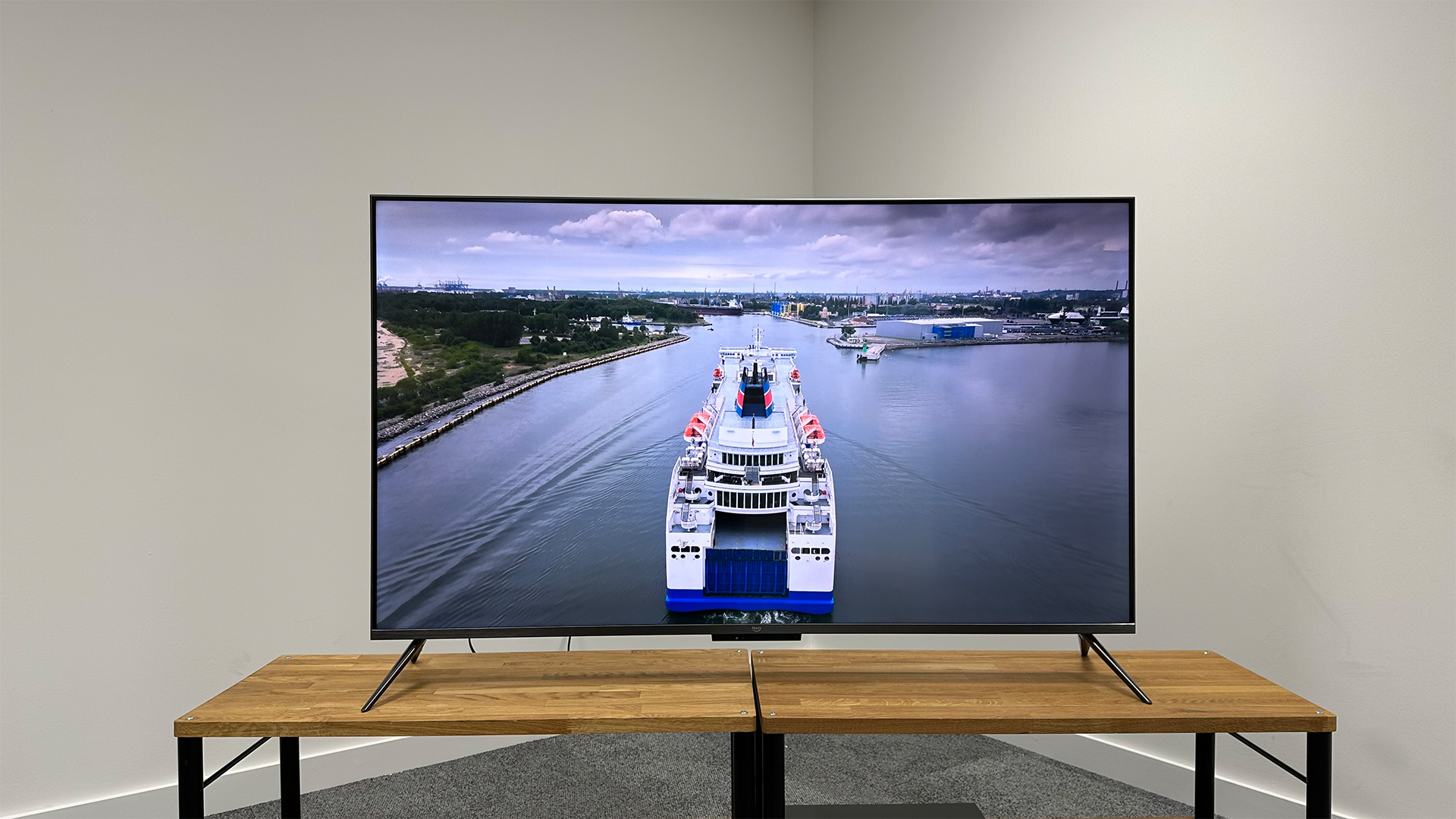
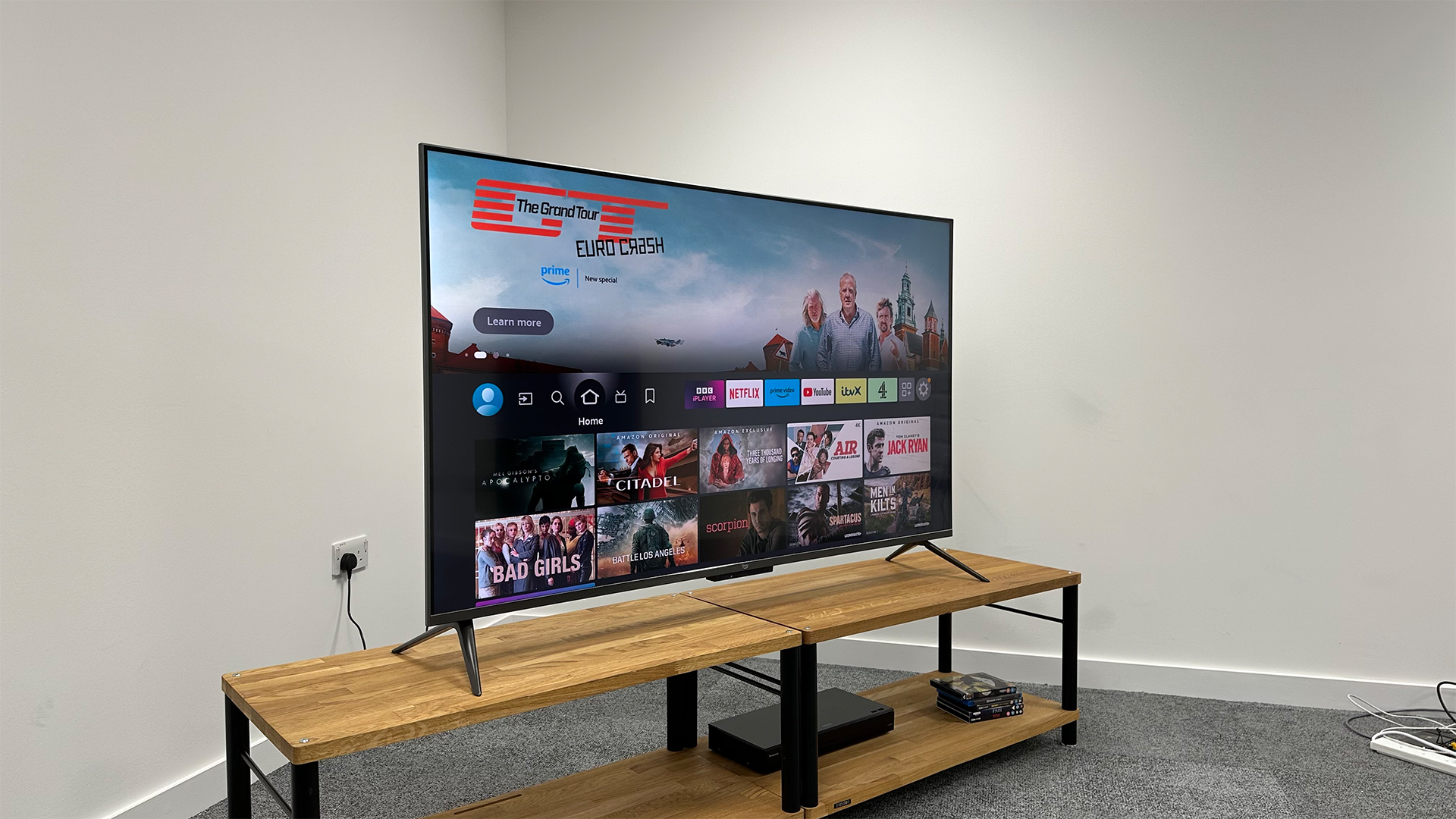
Specifications
Reasons to buy
Reasons to avoid
If the other TVs mentioned in this guide are a little over your budget, but you still want a reliable 65-inch TV, then the Amazon Omni QLED is our current recommendation.
While it's not perfect, and its picture performance doesn't match the more expensive sets, for the money you'll struggle to do better.
Once we got it running in our viewing room, we were immediately impressed by how vibrant and punchy colours were. This lets it deliver a wonderfully immersive experience in most of our checks. The only minor issue we had with colours was that skin tones at times looked a little richer than they should, but not to the point it ruined our viewing experience.
We were also pleased to see Amazon hasn't fallen into the classic pitfall of overprocessing images in a bid to mask shortcomings with the TV's panel, which often happens on affordable sets. Instead, the Omni QLED takes a much more consistent and considered approach. Whether it was moody dark movies like The Batman, or blindingly bright flops like Pan, the Omni QLED delivered a surprisingly even-handed picture that made the films all the more engrossing.
It's a similar story with detail and sharpness. The Omni QLED is far from mind-blowing, but we'd prefer that to films looking oversharpened, as they often do on affordable sets.
That said, there are a few drawbacks you should be aware of. Peak brightness is at best adequate, which makes HDR performance a little weaker than we'd like. While motion handling is reliable and blissfully free of the soap opera effect that commonly plagues cheaper TVs, pictures can look a bit smeary at times, particularly during busy scenes.
Dolby Atmos support isn't included, but the audio is otherwise good considering the Omni QLED's price. The audio delivered is undeniably narrow, but it is also direct and clear, which is something we can't say about many other cheap TVs.
For gamers, the set features VRR and ALLM, although 4K 120Hz is off the menu, so you won't get the best performance possible out of a PS5 or Xbox Series X/S.
Even with these compromises the Amazon Omni QLED remains a fantastic value-for-money option and our current recommendation for any buyer on the hunt for a big-screen TV that won't break the bank.
Read our full Amazon Fire TV Omni QLED review
Attributes | Notes | Rating |
|---|---|---|
Picture | You don't get OLEDs deep blacks, but great for the price | ★★★★☆ |
Sound | A soundbar is recommended, but it's fine for TV | ★★★★☆ |
Features | Great connectivity and an app rich operating system | ★★★★☆ |
The best premium 65-inch TV
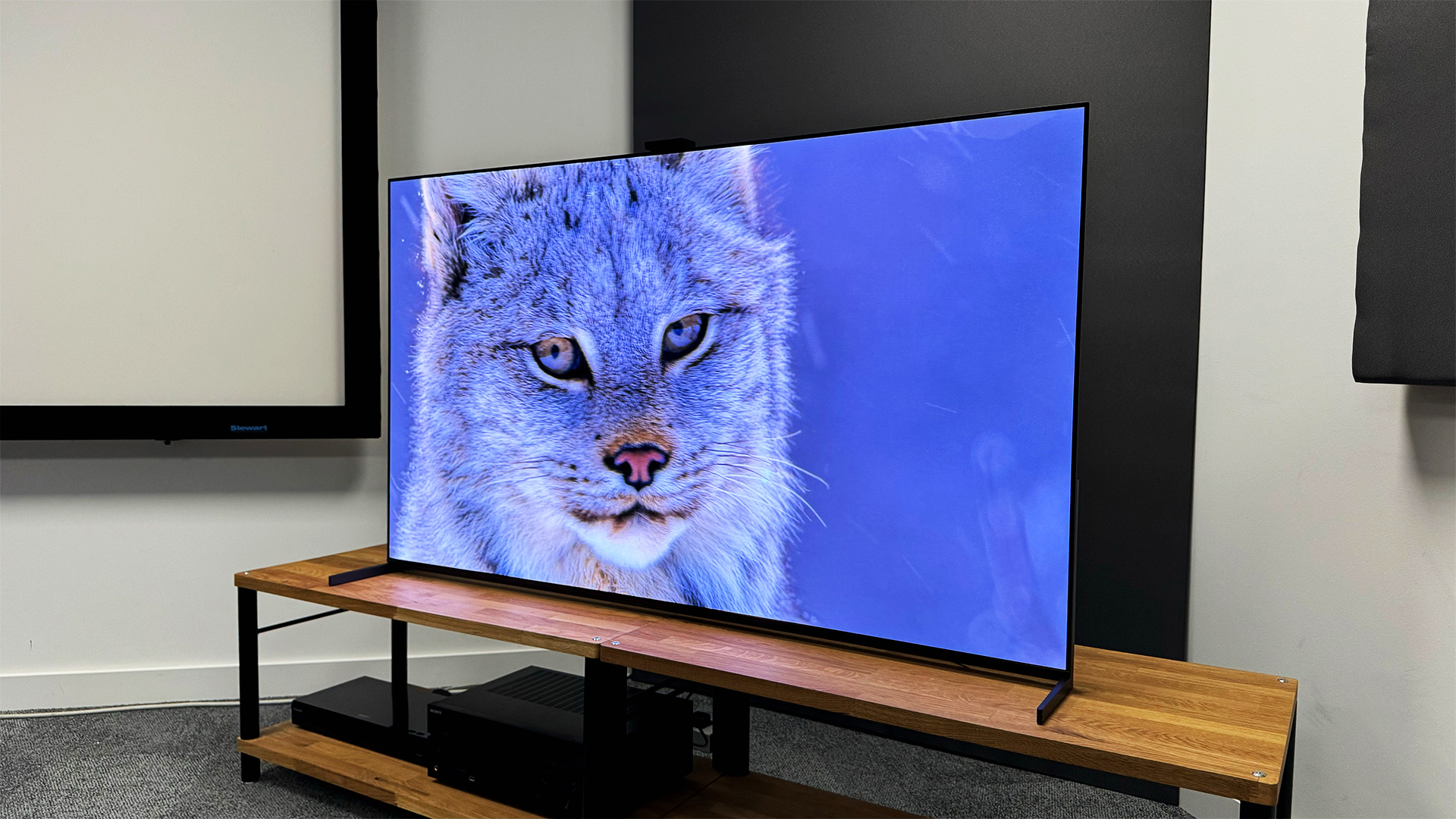
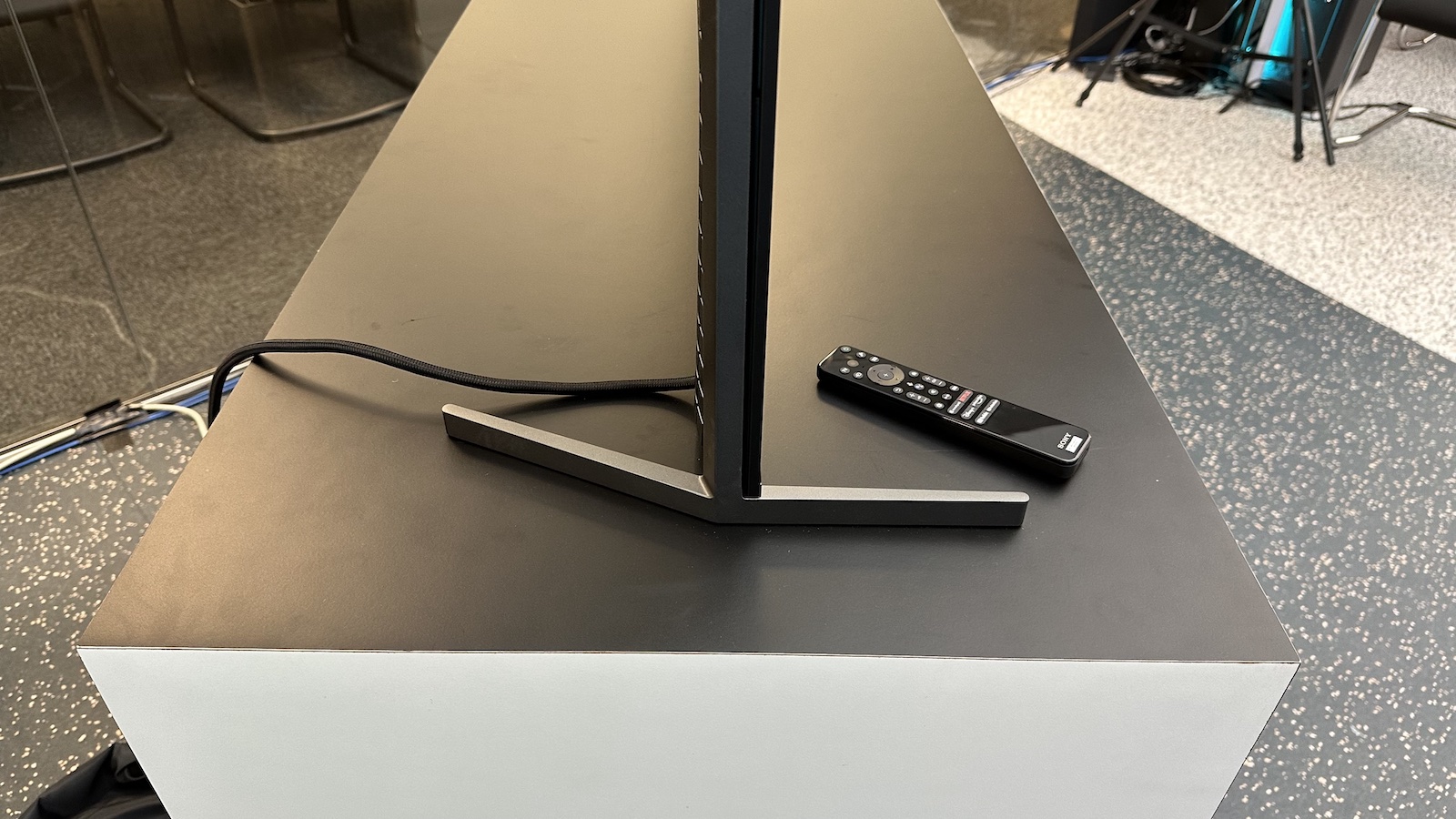
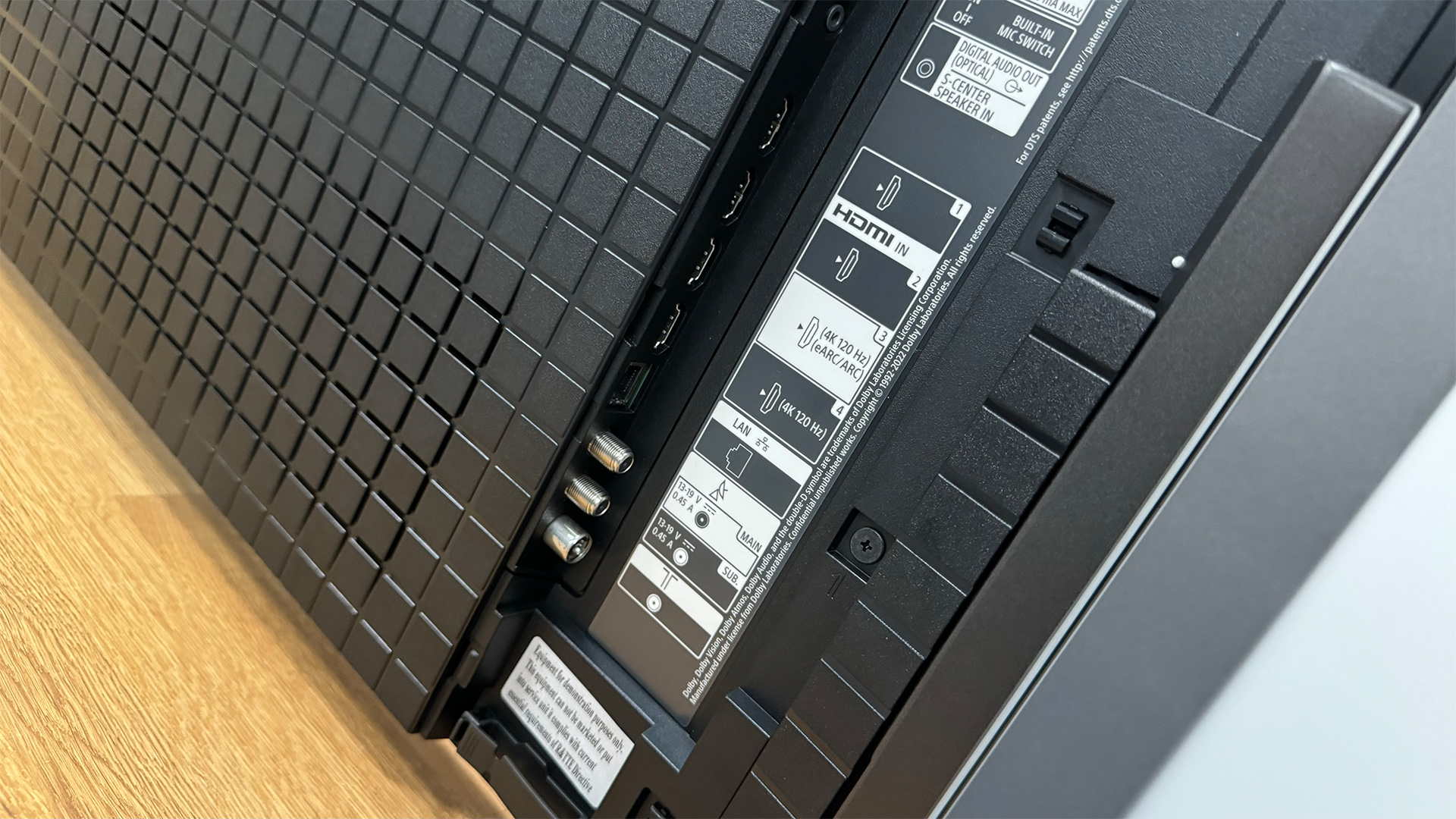
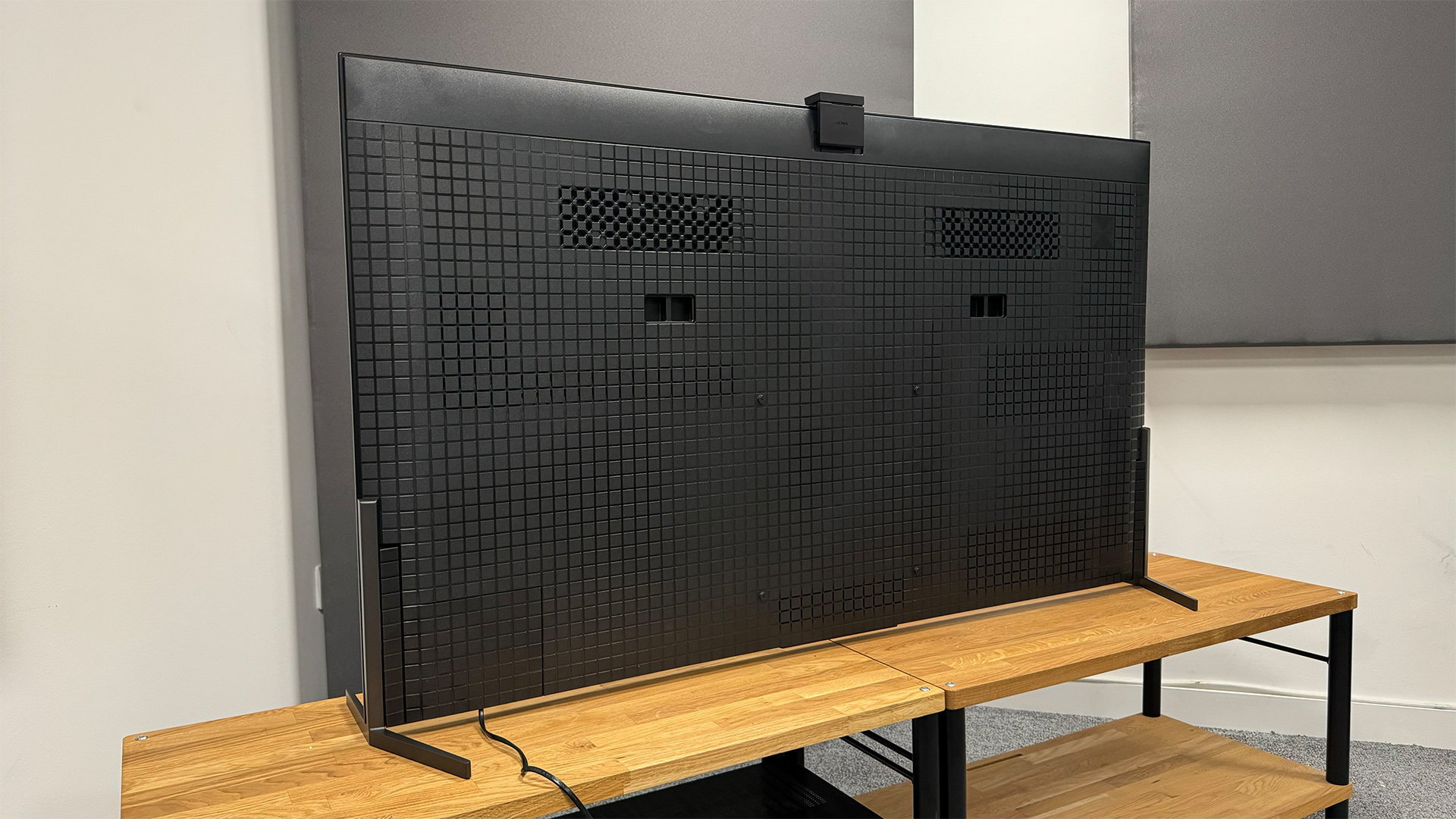
Specifications
Reasons to buy
Reasons to avoid
Sony's superb Bravia 8 II QD-OLED replaces the A95L and sits above the Bravia 8 in the range. It isn’t called Bravia 9 because that badge is taken by Sony’s flagship Mini LED, and Bravia 10 would imply it sits above the 9 – a name Sony is likely holding for its upcoming RGB LED TV. Don’t let the label undersell it though – this is one of the most exciting TVs of the year.
On the picture front, the 8 II builds on the A95L’s strengths with extra punch and refinement. Sony says the latest QD-OLED panel, custom heatsink, and processing allow higher peak brightness than A95L, along with improved dark gradation – gains that translate into more vibrant highlights, richer colours in both bright and low-light areas, and appreciably better shadow detail. In testing, the image feels strikingly solid and three-dimensional, with razor-like crispness that never looks etched.
It’s also unusually easy to get looking its best. Dolby Vision Dark and Professional produce a wonderfully authentic, balanced image – Dolby Vision Bright and Cinema add tasteful pop for brighter rooms. Upscaling is clean and consistent too, and the TV’s tone-mapping copes convincingly with demanding HDR masters. Google TV remains comprehensive and, crucially, includes the full suite of UK catch-up apps.
Sound is also an unusual highlight by TV standards. Acoustic Surface Audio+ uses actuators behind the panel to tie effects precisely to on-screen action, while the added woofers provide controlled weight. Dialogue is warm and detailed, scale extends beyond the chassis, and dynamics are handled confidently – you can enjoy it without an instant soundbar upgrade.
There are a few caveats though. Only two HDMI 2.1 sockets are provided, and one doubles as eARC, which isn’t ideal if you’re juggling multiple next-gen sources and a sound system. The new remote is a step down, too, reverting to a non-backlit, battery-powered design.
Even so, this is a sensational all-rounder that, in direct comparisons, can make the already excellent A95L look a touch flatter.
Read the full Sony Bravia 8 II review
Attributes | Notes | Rating |
|---|---|---|
Picture | Brighter than its already impressive A95L predecessor, with superb colour, shadow detail and three-dimensional solidity | ★★★★★ |
Sound | Acoustic Surface Audio+ delivers clear, spacious, well-placed effects | ★★★★★ |
Features | Google TV with UK apps, Dolby Vision support and (only) two HDMI 2.1 ports | ★★★★☆ |

If money was no object (oh, to dream!), this is the TV I would have at home. I'm a keen gamer and own both a PS5 and Xbox Series X (and a gaming PC, for that matter), so the limited HDMI 2.1 sockets would be a bit of a pain for me, but this is the one TV available that I would be prepared to make the extra effort for. It really is that good, and a notable upgrade on every other TV on this page.
Also consider
LG G4
The C4's more premium stablemate is an exceptional TV. It uses second-generation MLA technology to produce a significantly brighter picture than the G3, yet it still retains the balance and authenticity that you would expect from an LG OLED. With the arrival of the G5, which has been held back from a five-star review by an HDR bug, the high launch price of the G4 might soon fall far enough that it earns a full entry on this page – but not just yet.
Samsung S95D
Samsung's third-generation QD-OLED TV is comfortably its best yet. It's at least on a par for brightness with the LG G4 and it can produce even more vibrant colours thanks to the use of Quantum Dots. More importantly, Samsung has exercised more restraint in the tuning, so the S95D is less prone to exaggerating colours than its predecessors. It's a great alternative to the G4, but like that TV is currently too expensive to be considered for the main list.
Sony Bravia 9
Sony's next-gen Mini LED TV (and its flagship 2024 model) initially wasn't available in a 65-inch size in many regions, but the 65-inch model has now been rolled out to more places, including the UK. We reviewed the 75-inch model and, on balance, we feel that the OLED TVs available at this level are better overall, but if you want a super-bright TV or simply don't want an OLED, the Bravia 9 is well worth considering.
Panasonic Z95A
Panasonic's flagship OLED TV – which is available in the US as well as the UK – features super-bright second-generation MLA technology alongside Panasonic's well-documented picture authenticity. It also has a Dolby Atmos speaker system that includes dedicated front-, side- and up-firing speakers, and the new Fire TV OS is super-simple to use and packed with streaming apps. The only thing keeping the Z95A off the main list is the Sony A95L, which just pips it for picture and sound.
Philips OLED809
The Philips OLED809 is a really strong alternative to the LG C4 and Sony Bravia 8 if you're in the UK (Philips doesn't sell OLED TVs in the US or Australia). Like those TVs, it uses a 'standard' OLED panel, but it delivers a particularly bright and vibrant picture. It's got Ambilight, too, which adds an extra degree of spectacle. It does take more effort than most to get the picture looking its best, though.
65-inch TVs coming soon
There's often a big gap between a new TV being announced and it actually being available to buy, but these are the sets we are most excited about in 2025:
Samsung S95F
Samsung's flagship 4K TV for 2025 is the S95F, which features a next-gen QD-OLED panel that – like its new four-stack OLED rival – apparently offers a big boost to brightness. The S95F is also exceptionally stylish and features Samsung's unique One Connect system, which sees the connections routed to a box that's separate to the main display, with just a single cable running between the two.
Panasonic Z95B
Panasonic's 2025 flagship TV is another four-stack OLED with hitherto unseen brightness capabilities (by OLED standards). Like its predecessors, the Z95B has a fancy speaker system with dedicated side- and up-firing speakers, but the design has had a stylish overhaul. Panasonic produces arguably the most cinematically authentic TVs in the business, and we're expecting big things from this one.
Philips OLED910
Philips has two next-gen, four-stack OLEDs in its 2025 range. The OLED910 will be the more affordable model of the two (though pricing is yet to be announced), but the only significant difference between it and the flagship OLED950 is that it has a less sophisticated B&W sound system. That's good news as far as we're concerned, as we prefer to add a dedicated sound system to any new TV. As well as that fancy new OLED panel, the OLED910 also features a brand-new processor and four-sided Ambilight.
How to choose the best 65-inch TV for you
Panel technology:
The type of display you choose will have a huge bearing on your TV's picture performance. Without a doubt, OLED has become the premium TV technology of choice, thanks to its perfect blacks, extraordinary contrast and exceptional viewing angles.
QLED, which combines LED (or Mini LED) backlighting with ultra-vibrant Quantum Dots, is a strong alternative thanks to its potential for greater brightness and colour vibrancy, but quality is more variable than with OLED.
Meanwhile, standard LCD TVs (often, confusingly, sold as 'LED' TVs on account of their LED backlights) are even more variable in overall quality but, if you shop carefully, can offer excellent bang for your buck.
Your choice will largely come down to budget, and we broadly recommend going for an OLED model if you're able, but you might want to consider a super-bright QLED model if you often watch TV in an exceptionally bright room.
Audio:
Even the best TVs sound pretty poor next to a decent dedicated sound system such as a soundbar. For that reason, we generally recommend budgeting extra for sound and, if you do that, you can largely ignore the TV's own sound quality.
However, if you are determined to stick with your TV's built-in sound system, look for models that offer good dialogue clarity but also a sense of width and height, particularly when playing Dolby Atmos content.
Most TV speakers are essentially invisible, hidden in very thin chassis with very little room to move. These sound systems don't necessarily sound bad, but you can usually do better by going for a model with larger, forward-facing drivers, or a Sony OLED with clever actuators that make sound by imperceptibly vibrating the whole screen.
Gaming:
If you're a gamer, it's also worth considering the next-gen gaming features of your prospective new TV. Xbox Series X and PS5 gamers can gain a competitive advantage on certain games if their TV supports 4K/120Hz, while VRR support can result in a smoother gameplay experience. ALLM, meanwhile, simply ensures that you automatically get the best visual experience from both games and movies / TV shows. If you are a more casual gamer or not a gamer at all, you can pretty much disregard these features, and doing so will likely save you a lot of cash.
How we test 65-inch TVs
Testing a 65-inch TV isn’t just a case of sitting down in front of it and sticking a film on. Modern TVs now do so much that thoroughly evaluating all of their strengths and weaknesses is a complex and time-consuming process. As well as assessing its performance when fed multiple content resolutions, from standard-definition to 4K (and sometimes even up to 8K), there are also multiple high dynamic range (HDR) formats to try – and that’s before you even get to the audio performance and general usability.
Modern 65-inch TVs also now come with a suite of smart features, and testing them out isn’t just a case of ticking off which streaming apps are installed. Each one needs to be checked to make sure it’s outputting the video and sound formats that the manufacturer claims it can. Just because the Disney+ app is available doesn’t necessarily mean it supports Dolby Vision and/or Dolby Atmos on that specific TV, so each one must be fully tested.
Many people like to plug a PlayStation or Xbox into their 65-inch TVs too, so we hook up both a PS5 and Xbox Series X to establish which advanced gaming features, such as 4K 120Hz, VRR, HGiG, and Dolby Vision, are supported and how well they work. We also check which of the TV’s HDMI ports support these features, and measure input lag using a Leo Bodnar device.
Picture quality on a 65-inch TV isn’t just tested with the latest 4K Blu-rays. We know that plenty of people still watch HD and sometimes even SD content, whether it’s over-the-air, streamed over the internet, or on good old-fashioned DVD, so we feed each set plenty of different sources to see how it copes with each.
Every 65-inch TV arrives with its own set of factory settings, and while we don’t enlist any professional help when it comes to calibration (you won’t have that at home, so we don’t either), we do spend hours tinkering with them to make sure we’re getting the best out of each set. For this, we use a mixture of test patterns and real-world content to give every TV the best chance to shine.
Bigger TVs also tend to come with bigger built-in speakers, so while we almost always advise that a new TV is paired with a soundbar or AV amplifier, we also thoroughly test the onboard sound system with a variety of movies and music. Just as with the picture, we’ll also test out the various audio settings and processing modes to see how they affect the sound.
Every 65-inch TV we test is compared to others at its price and size so we can compile a definitive list of the very best – it’s why we keep all of our Award-winners on hand as benchmarks.
All of our testing takes place at our state-of-the-art facilities in London and Reading, which means we have total control over the process and can ensure consistency across the board. None of our reviews are just the opinion of a single writer either, with all verdicts agreed upon by the whole team, so you can be sure they’re consistent and free of personal preference.
With over 100 years’ experience of testing and writing about televisions, the What Hi-Fi? team has the knowledge and authority to only pick out the very best products and include them in our Best Buys. That’s why if you choose to buy a 65-inch TV that’s recommended on this page, or a product from any other Best Buy page, you know you’re getting a What Hi-Fi? approved product.
FAQ
Is 65-inches the best size TV?
That’s a bit like asking: is large the best size for trousers? It depends entirely on your situation. There are 48-inch TVs that are better than 65-inch ones, and 85-inch ones that are better than both, but that doesn’t mean the 85-inch TV is the best choice for everybody.
Most flagship TVs only tend to come in larger sizes, although high-end features are gradually starting to filter down to smaller models, but the key consideration when choosing screen size should be the size of your room and how far away you’re going to sit when you watch the TV.
Check out our guide if you want a full breakdown on how to choose the right size TV for you.
What is the best viewing distance for a 65-inch TV?
We have a complete guide to TV viewing distances but, in short, the generally accepted 'best' viewing distance for a 65-inch 4K TV is about 2m / 6.5ft. This will give you a great balance of cinematic immersion and comfort.
However, there is nothing wrong with sitting a bit closer for an even more cinematic experience or a bit further away for more relaxed viewing. Really, it comes down to personal preference, but that 2m / 6.5ft measurement is a great starting point.
Is a 65-inch TV good for gaming?
While a bigger screen will usually mean your gaming sessions feel more immersive, the size isn’t the only consideration when it comes to gaming performance. Key things to look for include the number of HDMI 2.1 ports (the more the better) and support for things such as 120Hz 4K, VRR, ALLM, HGiG, and Dolby Vision gaming. The more of those you can tick off, the better the TV is likely to perform when connected to your PS5 or Xbox.
Are cheap 65-inch TVs good?
It's certainly possible to buy a good, cheap 65-inch TV, but you do need to temper expectations. Cheap OLED TVs still don't really exist at any size, let alone one this big, and if you're looking at TVs costing less than £500, you'll also likely be ruling out QLED models and even local dimming. If you want a balanced, fairly cinematically authentic picture that will reproduce your movies relatively faithfully without knocking your socks off, a model such as the TCL P755K above should make you very happy.
Glossary
There are a lot of buzzwords and acronyms in the world of TVs, and we understand that can be very confusing, so read below for a quick summary of many of the terms on this page. If a term is clickable, it means we have a dedicated explainer page for those who want to dig deeper.
4K/120Hz
Part of the HDMI 2.1 spec, 4K/120Hz refers to a TV's ability to receive 4K signals at a 120Hz refresh rate – double the typical 60Hz limit. These 4K/120Hz signals can be sent by an Xbox Series X, PS5 or high-end gaming PC when certain games are being played, and the result is super-fluid and responsive gameplay.
4K/144Hz
Some new TVs are going beyond 4K/120Hz and offering support for 144Hz refresh rates. This is something that only PC gamers with very high-end gaming rigs can take advantage of as it's not supported by current consoles.
ALLM
Auto Low Latency Mode is a feature that allows a TV to recognise when a gaming signal is being received and automatically switch to its optimised game mode, which should result in lower input lag.
ARC/eARC
Audio Return Channel (ARC) is a feature that allows a TV to output sound via an HDMI socket that can also receive a picture signal. It can support various sound signals, including compressed Dolby Atmos. Enhanced Audio Return Channel (eARC) adds support for higher-quality formats, including uncompressed Dolby Atmos. Almost all modern TVs support ARC or eARC and it's now the most common way to connect a soundbar or AV receiver.
Dolby Vision
Dolby's 'dynamic' HDR (high dynamic range) format adapts to the content and the capabilities of the TV playing it in real-time, generally resulting in an even more dynamic but accurate picture than you get with 'static' HDR formats such as HDR10 and HLG. Dolby Vision is supported by at least some of the TVs of most brands, but not those made by Samsung.
HDMI 2.1
The latest core version of HDMI, HDMI 2.1 offers faster data rates than HDMI 2.0, enabling support for formats such as 4K/120Hz, 4K/144Hz and 8K/60Hz. However, having HDMI 2.1 doesn't necessarily mean that a TV can handle any of those features or others such as VRR or ALLM, which is why we specify the type of HDMI sockets a TV has as well as the specific advanced features it can support.
HDR10
Essentially the core version of HDR (high dynamic range), which offers brighter highlights, more contrast and more vibrant colours than SDR (standard dynamic range). All HDR TVs should support this and HLG.
HDR10+
A 'dynamic' version of HDR10 that, like Dolby Vision, adapts to the content and the capabilities of the TV playing it. When done right, it results in an even more dynamic but realistic picture. Samsung is the pioneer of HDR10+, but you will also find support for the format in TVs from Panasonic, Philips, TCL and Hisense.
HLG
Hybrid Log Gamma is the 'static' HDR format used for broadcasting and live streaming via services such as Sky and the BBC. All HDR TVs should support this along with HDR10.
Input lag
The time it takes for presses on a game controller to be represented by on-screen actions. This is measured in milliseconds and the best gaming TVs can now hit less than 10ms, though anything under 40ms is imperceptible to most people.
Mini LED
A type of backlight that involves far smaller LEDs than are found in typical backlights. Because they're so much smaller, many more can be packed in, generally resulting in better contrast and less blooming of light into dark parts of the picture.
OLED
The most popular premium TV technology, OLED features organic light-emitting diodes that can be lit on a pixel-by-pixel basis, resulting in far greater contrast control than a backlit TV can manage.
QLED
A TV technology pioneered by Samsung (but now used by many brands) that combines a backlight (either LED or Mini LED) with Quantum Dots for greater colour vibrancy.
VRR
Variable Refresh Rate allows a TV to dynamically adjust its refresh rate to match the frame rate being sent by a connected games console or PC, resulting in more fluid and responsive gameplay.
Recent updates
- 29th September 2025
Replaced the Sony Bravia 8 with the LG C5 as the overall best 65-inch TV. Added the TCL C7K as the best mid-range option, and replaced the Sony A95L with the Sony Bravia 8 II as the best premium 65-inch TV. - 6th May 2025
Added the LG C5 as the 'best new' option, and revised the copy for the LG C4 to acknowledge and reflect that. Added the Sony Bravia 8 II to the 'coming soon' section and tweaked relevant copy elsewhere to reflect the fact that it exists but hasn't been tested by our review team yet. - 31st January 2025
Removed the Panasonic Z90A, Amazon Fire TV Omni QLED Mini LED, LG B4 and Samsung S90D from the coming soon section and added the LG C5, LG G5, Samsung S95F, Panasonic Z95B and Philips OLED910. Also reworked the how to choose section and added an FAQ about the best viewing distance for 65-inch TVs. - 21st November 2024
Added the Panasonic Z95A to the also consider section, and added the Panasonic Z90A and Amazon Fire TV Omni QLED Mini LED to the coming soon section. - 28th October 2024
Replaced the LG C4 with the Sony Bravia 8 as the best overall after conducting side-by-side comparisons for the What Hi-Fi? Awards. The C4 remains the best for gaming. Also replaced the discontinued TCL C845K with the newer (and much cheaper) TCL P755K as the best budget UK choice. - 5th September 2024
Removed the Sony A80L due to lack of availability and promoted the LG C4 from 'best 2024' to 'best overall'. Made the LG C4 the 'best for gaming' as its discounted price brings it close enough to last year's C3 to become the better option. Also replaced the Philips OLED908 and Panasonic MZ1500 in the 'also consider' section with the Philips OLED809 and Sony Bravia 8. Finally, we added a 'coming soon' section and glossary of common TV terms towards the bottom of the page. - 19th June 2024
Added the LG C4 as the best 2024 TV and added the LG G4 and Samsung S95D to the also consider section - 6th March 2024
Added new also considered entries, intro, FAQ answers, and how we test sections
The latest hi-fi, home cinema and tech news, reviews, buying advice and deals, direct to your inbox.
Tom Parsons has been writing about TV, AV and hi-fi products (not to mention plenty of other 'gadgets' and even cars) for over 15 years. He began his career as What Hi-Fi?'s Staff Writer and is now the TV and AV Editor. In between, he worked as Reviews Editor and then Deputy Editor at Stuff, and over the years has had his work featured in publications such as T3, The Telegraph and Louder. He's also appeared on BBC News, BBC World Service, BBC Radio 4 and Sky Swipe. In his spare time Tom is a runner and gamer.
